24/7 Helpline:
(866) 899-221924/7 Helpline:
(866) 899-2219
Learn more about PTSD Rehab centers in St. Louis County
Other Categories in St. Louis County

Other Insurance Options

Premera

Magellan

UMR

Medical Mutual of Ohio

Providence

BHS | Behavioral Health Systems

Holman Group

Carleon

Lucent

Amerigroup

Sliding scale payment assistance

Choice Care Network

WellCare Health Plans

Aetna

Multiplan

MVP Healthcare

Optum

ComPsych

BlueCross

Ceridian

Gibson Recovery Center
Gibson Recovery Center is a non-profit rehab located in Perryville, Missouri. Gibson Recovery Center...

ReDiscover – Woodland
ReDiscover - Woodland offers outpatient substance use disorder program for men and women age 18 and ...

Midwest ADP
Midwest ADP offers supervised probation services, SATOP, alcohol and drug education and counseling, ...

Preferred Family Healthcare – Bridgeway Behavioral Health
Bridgeway Behavioral Health, a program offered by Preferred Family Healthcare (PFH), is a dual diagn...

Compass Health Network – Harrisonville
Pathways Community Health’s Harrisonville, Missouri office is located at 300 Galaxie Avenue and prov...

Recovery Chapel
Recovery Chapel is a long-term sober living environment for men located in Springfield, MO. Recovery...

Southeast Missouri Behavioral Health
Southeast Missouri Behavioral Health - North Grand offers inpatient and outpatienttreatment for indi...

Compass Health Network – Salem
Pathways Community Health - South Pershing Avenue provides mental health disorder treatment services...

Assisted Recovery Centers of America
Assisted Recovery Centers of America (ARCA) is a mental health recovery and drug and alcohol addicti...

Gibson Recovery Center – Men’s Residential Program
Gibson Recovery Center – Men’s Residential Program is a non-profit rehab located in Cape Girardeau, ...

Harris House
Harris House is a private alcohol and drug addiction recovery center in Saint Louis, Missouri. They ...

Missouri Network Outreach Center
Missouri Network Outreach Center is a non-profit rehab located in Saint Louis, Missouri. Missouri Ne...

Phoenix Programs
Phoenix Programs offers a full continuum of care for men and women with addiction and co-occurring d...

Compass Health Network – Odessa
Compass Health Network -- Odessa is a comprehensive behavioral health and drug and alcohol addiction...

Preferred Family Healthcare – Adolescent
Preferred Family Healthcare – Adolescent is a private rehab located in Saint Louis, Missouri. Prefer...

Kansas City Indian Center
Kansas City Indian Center is a public rehab located in Kansas City, Missouri. Kansas City Indian Cen...

Preferred Family Healthcare – Women’s Residential
Located in St. Charles, Missouri, Preferred Family Healthcare- Women’s Residential is an alcohol and...

Healing House
Healing House stands as a substance use disorder in Kansas City, MO. By providing safe and stable ho...
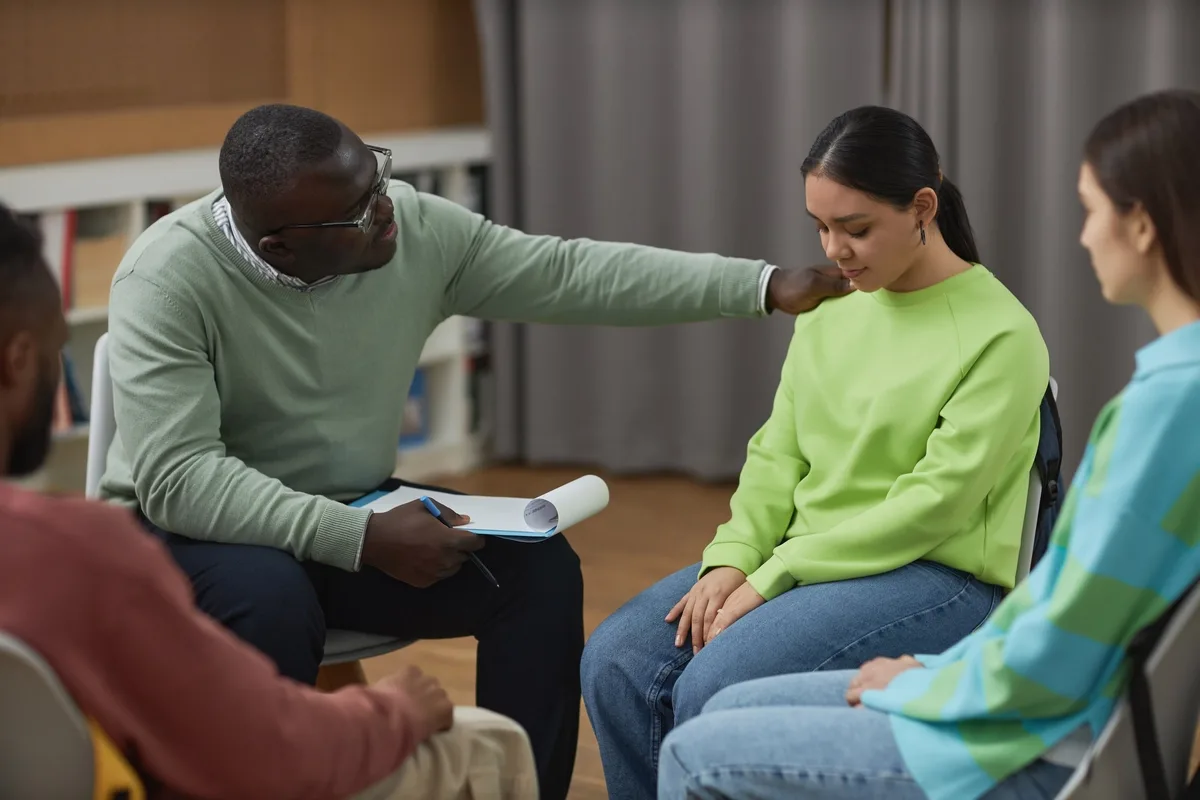
Midwest Recovery
Midwest Recovery is a full service alcohol and drug addiction recovery facility in Kansas City, Miss...

Sana Lake Behavioral Wellness Center Kansas City
Sana Lake Behavioral Wellness Center Kansas City is a private rehab located in Kansas City, Missouri...

The Aviary Recovery Center
The Aviary Recovery Center, located in St. Louis, Missouri, is an alcohol and drug rehab that offers...

Synergy Recovery Center
Synergy Recovery Center is a private women's mental health and alcohol and drug addiction treatment ...

Cass County Psychological Services
Community Mental Health Consultants is a comprehensive community mental health and substance abuse c...

Ozark Center – New Directions
Ozark Center -- New Directions is a private drug and alcohol addiction recovery center in Joplin, Mi...

Alternative Behavioral Care
LifeStance is a comprehensive mental health treatment and support center in Saint Peters, Missouri. ...

Mental Health Clinic of Samuel Rodgers
Mental Health Clinic of Samuel Rodgers is a private rehab located in Kansas City, Missouri. Mental H...

Preferred Family Healthcare – Residential Adult
Preferred Family Healthcare–Adult Residential is an integrative drug and alcohol rehab for adults in...

Midwest Institute for Addiction
Midwest Institute for Addiction provides a comprehensive set of solutions for those dealing with alc...

Compass Health Network – Warrenton
Compass Health Network – Warrenton is a private rehab located in Warrenton, Missouri. Compass Health...

Pathways Community Health
Pathways Community Health - Burkath Road provides mental health and substance use disorder treatment...

Truman Medical Center Behavioral Health
Truman Medical Centers is a not-for-profit health system, Truman Medical Center Behavioral Health is...
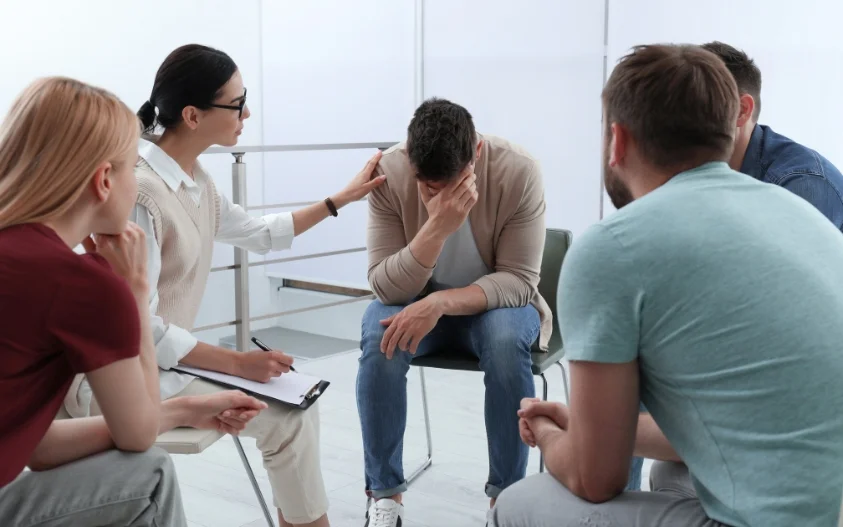
Sana Lake Recovery
Sana Lake Recovery is a CARF-accredited drug and alcohol addiction rehab center located in Liberty, ...

Compass Health Network – Columbia
Compass Health Network – Columbia is a private rehab located in Columbia, Missouri. Compass Health N...

Valley Hope of Boonville
Located in central Missouri off I-70 and set on a wooded, eight-acre campus amidst rolling hills, Va...

Southeast Missouri Behavioral Health
Southeast Missouri Behavioral Health is a private rehab located in Park Hills, Missouri. Southeast M...

Preferred Family Healthcare
Preferred Family Healthcare offers an outpatient program, day treatment, and SATOP. Preferred Family...

Fulton State Hospital – Mental Health Treatment
Fulton State Hospital – Mental Health Treatment is a public rehab located in Fulton, Missouri. Fulto...

Clayton Behavioral
Clayton Behavioral is a private rehab located in Saint Louis, Missouri. Clayton Behavioral specializ...

Behavioral Health Group (BHG) of Joplin
Behavioral Health Group (BHG) of Joplin is a private rehab located in Joplin, Missouri. Behavioral H...

Compass Health Network – Sedalia
Pathways Community Health’s Sedalia, Missouri office is located at 1700 West Main Street and provide...

Comprehensive Mental Health Services
Comprehensive Mental Health Services is an organization of professionals dedicated to helping people...

Alano Club
Alano Club is a non-profit rehab located in Joplin, Missouri. Alano Club specializes in the treatmen...

Saint Louis Behavioral Medicine Institute
Saint Louis Behavioral Medicine Institute, located in Saint Louis, Missouri, offers behavioral healt...

Pathways Behavioral Health
Pathways Behavioral Health is a non-profit rehab located in Butler, Missouri. Pathways Behavioral He...

Burrell Central Region
Burrell Central Region is a private rehab located in Columbia, Missouri. Burrell Central Region spec...

Community Counseling Center – Lou Masterman Center
Community Counseling Center - Lou Masterman Center is a private, non-profit organization that serves...

Preferred Family Healthcare – Jamison Street
Preferred Family Healthcare is a mental health, behavioral health, and dual diagnosis treatment cent...

Saint Francis Hospital – Behavioral Health Services
Saint Francis Hospital – Behavioral Health Services is a private rehab located in Maryville, Missour...

Options Outpatient Counseling
Options Outpatient Counseling is a private rehab located in Joplin, Missouri. Options Outpatient Cou...

Pathways Behavioral Health
Pathways Community Health’s Waynesville, Missouri office is located at 704 W, Historic Rte. 66 and p...

Preferred Family Healthcare – Bridgeway Behavioral Health – Dunnica
Preferred Family Healthcare - Bridgeway Behavioral Health - Dunnica offers a residential and outpati...

Preferred Family Healthcare – Bridgeway Behavioral Health
Preferred Family Healthcare - Bridgeway Behavioral Health offers an outpatient program, day treatmen...

Mark Twain Behavioral Health
Mark Twain Behavioral Health is a private rehab located in Kirksville, Missouri. Mark Twain Behavior...

Truman Medical Center Lakewood Medical – Medical Detox Services
The Truman Medical Center Lakewood Medical – Medical Detox Services is a hospital program that provi...

ADAPT of Missouri
ADAPT of Missouri is a private rehab located in Saint Louis, Missouri. ADAPT of Missouri specializes...

Places for People – Lindeil Boulevard
Places for People – Lindeil Boulevard is a private rehab located in Saint Louis, Missouri. Places fo...

Compass Health Network – El Dorado Springs
Pathways Community Health - West Broadway Street provides mental health and substance use disorder t...

Southeast Missouri Behavioral Health – South Main Street
Southeast Missouri Behavioral Health - South Main Street is an outpatient facility that offers treat...

Mattie Rhodes Center
Mattie Rhodes Center is a community-driven organization in Kansas City, Missouri dedicated to enhanc...

Compass Health Network
Compass Health Network is a non-profit rehab located in Columbia, Missouri. Compass Health Network s...
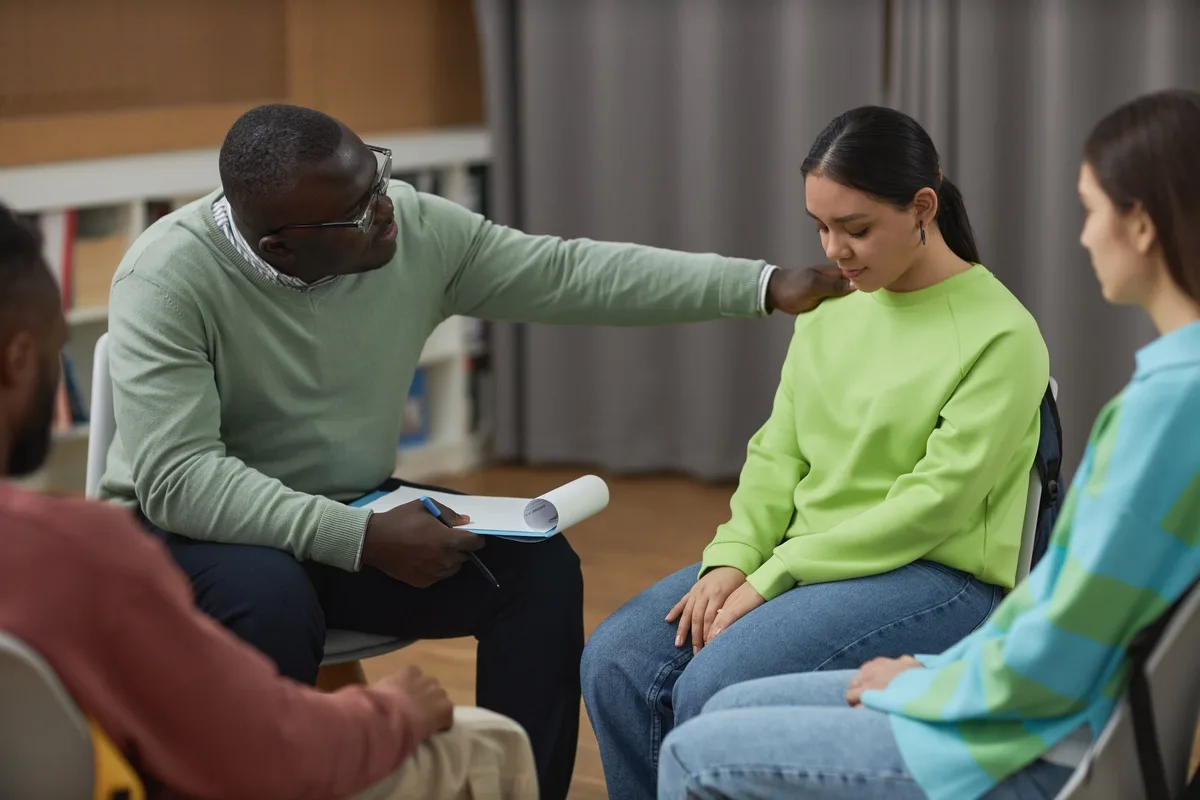
Benilde Hall
The Benilde Hall facility provides dual-diagnosis addiction treatment in Kansas City, MO. With a com...

Salvation Army – Harbor Light Center
The Salvation Army Harbor Light Center is a drug and alcohol rehab facility located in Saint Louis M...

Southeast Missouri Behavioral Health
Southeast Missouri Behavioral Health is an outpatient facility that offers treatment for individuals...

Recovery Outreach Services
Recovery Outreach Services is a private rehab located in Springfield, Missouri. Recovery Outreach Se...

Southeast Missouri Behavioral Health
Southeast Missouri Behavioral Health is an outpatient facility that offers treatment for individuals...

Southeast Missouri Behavioral Health
Southeast Missouri Behavioral Health is an outpatient facility that offers treatment for individuals...

Moberly Regional Medical Center – Senior Mental Health
Moberly Regional Medical Center - Senior Mental Health offers alcohol and drug rehab services and be...

Preferred Family Healthcare – Residential Adolescent
Preferred Family Healthcare - Residential Adolescent offers a residential and outpatient program, da...

Crittenton Childrens Center – Outpatient
Crittenton Childrens Center – Outpatient is a private rehab located in Kansas City, Missouri. Critte...

Compass Health Network – Higginsville
Compass Health Network – Higginsville is a private rehab located in Higginsville, Missouri. Compass ...

Compass Health Network – Children’s Center
Compass Health Network – Children’s Center is a non-profit rehab located in Jefferson City, Missouri...

Preferred Family Healthcare
Preferred Family Healthcare is a private rehab located in Springfield, Missouri. Preferred Family He...

Family Guidance Center – North 22nd Street
Family Guidance Center – North 22nd Street is a private rehab located in Saint Joseph, Missouri. Fam...

Compass Health Network – Camdenton
Compass Health Network – Camdenton is a private rehab located in Camdenton, Missouri. Compass Health...

Hyland Behavioral Health System
Hyland Behavioral Health System, located in St. Louis, Missouri, provides education, prevention, and...

Accent On Recovery
Accent On Recovery is a private rehab located in Blue Springs, MO. Accent On Recovery specializes in...

Burrell Behavioral Health
Burrell Behavioral Health offers specialized services for addiction for those individuals seeking fo...

Hawthorn Childrens Psychiatric Hospital
Hawthorn Childrens Psychiatric Hospital is a public rehab located in Saint Louis, Missouri. Hawthorn...

New Vision Counseling
New Vision Counseling, located in Sikeston, Missouri, offers behavioral health care and mental healt...

Tri County Mental Health Services
Tri County Mental Health Services provides nationally recognized behavioral health services that inc...

Assessment & Counseling Solutions
Assessment & Counseling Solutions offers outpatient treatment for individuals with alcohol and/or su...

Compass Health Network – Woodrail
Compass Health Network–Woodrail provides outpatient addiction recovery services for adolescents and ...

Pathways Behavioral Health
Pathways Community Health’s Clinton, Missouri office is located at 1800 Community Drive and provides...

Southeast Missouri Behavioral Health
Southeast Missouri Behavioral Health - New Era Center is a residential facility that offers treatmen...

BJC Behavioral Health – Southeast Site
BJC Behavioral Health – Southeast Site is a private rehab located in Farmington, Missouri. BJC Behav...

Compass Health Network – Jefferson City
Pathways Community Health’s Jefferson City, Missouri office is located at 227 Metro Drive and provid...

Preferred Family Healthcare
Preferred Family Healthcare - North County offers an outpatient program and day treatment. Preferred...

Compass Health Network – Rolla
Pathways Community Health’s Rolla, Missouri office is located at 1450 E. 10th Street and provides me...

ReDiscover – Catherine’s Place
The ReDiscover – Catherine’s Place is a CARF-accredited substance abuse rehab center located in Kans...

Community Mental Health Consultants
Community Mental Health Consultants is a comprehensive community mental health and substance abuse c...

Oxford House – Bicknell
Oxford House - Bicknell is an inpatient rehab for men located in Columbia, MO. Oxford House - Bickne...

Door to Hope
Door to Hope is a private rehab located in Nixa, Missouri. Door to Hope specializes in the treatment...

Oxford House Gravois
Oxford House Gravois is a non-profit house located in Saint Louis, MO. Oxford House Gravois helps in...

Preferred Family Healthcare
Preferred Family Healthcare is located in Hannibal, Missouri. Preferred Family Healthcare provides a...

Escape Alcohol and Drug Addiction Counseling
Escape Alcohol and Drug Addiction Counseling is an outpatient rehab located in Moberly, MO. Escape A...

Behavioral Health Group
Behavioral Health Group is a private rehab located in West Plains, Missouri. Behavioral Health Group...

Heartland Center for Behavioral Change
Heartland Center for Behavioral Change is a private, not for profit, charitable organization dedicat...

Compass Health Network – New Town
Compass Health Network – New Town is a private rehab located in Saint Charles, Missouri. Compass Hea...

Mineral Area Psychiatric Rehabilitation Center
Mineral Area Psychiatric Rehabilitation Center is a private rehab located in Farmington, Missouri. M...

Westend Clinic
Westend Clinic is a private rehab located in Saint Louis, Missouri. Westend Clinic specializes in th...

Compass Health Network – Christy Drive
Compass Health Network – Christy Drive is a private rehab located in Jefferson City, Missouri. Compa...
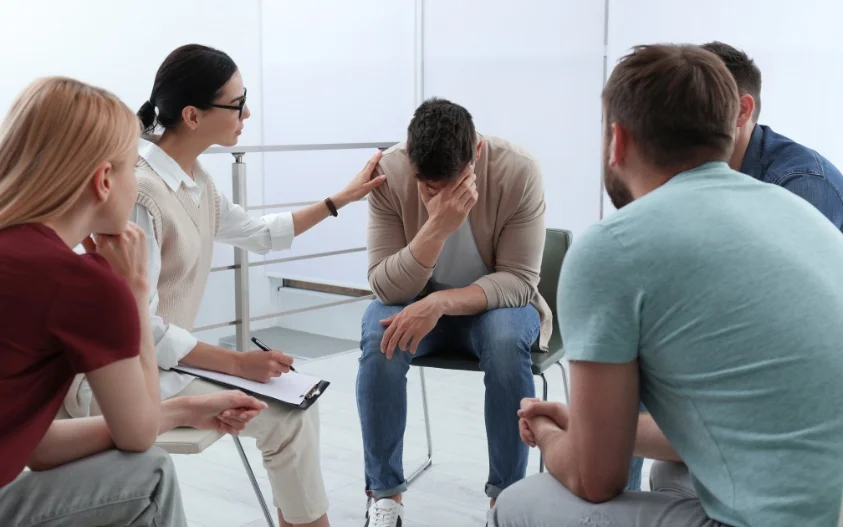
Compass Health Network – St. Charles
Crider Health Center - Compass Point Drive provides mental health and substance use disorder treatme...

Alternatives
Alternatives is a private rehab located in Springfield, Missouri. Alternatives specializes in the tr...

Burrell Behavioral Health – Park Avenue
Burrell Behavioral Health - Park Avenue offers specialized services for addiction for those individu...

Pathways Community Health – Family Counseling Center
Pathways Community Health - 117 North Garth Avenue provides mental health and substance use disorder...

Cameron Regional Medical Center – Behavioral Health
Cameron Regional Medical Center – Behavioral Health is a private rehab located in Cameron, Missouri....

Burrell Behavioral Health – Boonville
Burrell Behavioral Health – Boonville is a private rehab located in Boonville, Missouri. Burrell Beh...

Turning Point Recovery Centers
Turning Point Recovery Centers strive to improve the quality of life in the individual and community...

ARCA – Assisted Recovery Centers of America
ARCA – Assisted Recovery Centers of America is a private rehab located in Chesterfield, Missouri. AR...

Recovery Plus AA Group
Recovery Plus AA Group is a non-profit rehab located in Kansas City, Missouri. Recovery Plus AA Grou...

Compass Health Network – Nevada
Pathways Community Health - Mac Boulevard provides mental health and substance use disorder treatmen...

Preferred Family Healthcare – Bridgeway Behavioral Health
Preferred Family Healthcare - Bridgeway Behavioral Health offers an outpatient program for substance...

Gateway Foundation
Gateway Foundation is a private rehab located in Kansas City, Missouri. Gateway Foundation specializ...

Turning Point Recovery Centers
Turning Point Recovery Centers want to improve the quality of life of every consumer of the communit...

Rusk Rehabilitation Center
Located in Columbia, Missouri, Rusk Rehabilitation Center is a comprehensive mental health and addic...

Compass Health Network – Raymore
The Compass Health Network Raymore facility is a dual diagnosis substance abuse treatment rehab cent...

Preferred Family Healthcare – Bridgeway
Preferred Family Healthcare - Bridgeway offers an outpatient program, day treatment, and SATOP. Pref...

Oxford House – Willowbrook
Oxford House - Willowbrook is an inpatient rehab for men located in Columbia, MO. Oxford House - Wil...

Compass Health Network – Warsaw
Pathways Community Health - North Dam Access Road is located within the Harbor Village building and ...

Southeast Missouri Behavioral Health
Southeast Missouri Behavioral Health is an outpatient facility that offers treatment for individuals...

FCC Behavioral Health – Women and Children’s Program
FCC Behavioral Health–Women and Children’s Program is an integrative drug and alcohol rehab in Cape ...

BHG Springfield Treatment Center
BHG Springfield Treatment Center is a private rehab located in Springfield, MO. BHG Springfield Trea...

FCC Behavioral Health – Turning Leaf Center
FCC Behavioral Health is a dual diagnosis, drug, and alcohol rehab facility located in West Plains, ...

Provident – Downtown
Provident – Downtown is a private rehab located in Saint Louis, Missouri. Provident – Downtown speci...

Tri County Psychological Services
Tri-County Psychiatric Services is a private rehab located in Marshfield, MO. Tri-County Psychiatric...

Compass Health Network – Fulton
Pathways Community Health - Fairway Drive provides mental health and substance use disorder treatmen...

Preferred Family Healthcare – Adolescent Residential
Preferred Family Healthcare - Adolescent Residential offers a residential and outpatient program, an...

Cornerstone of Care – Ozanam
Cornerstone of Care – Ozanam is a private rehab located in Kansas City, Missouri. Cornerstone of Car...

Preferred Family Healthcare – Residential Adolescent
Preferred Family Healthcare - Residential Adolescent offers a residential and outpatient program, an...

Swope Health Services – Behavioral
Swope Health Services - Behavioral is a non-profit organization located in Kansas City, MO. Swope He...

Stepping Into The Light Ministry
Stepping Into The Light Ministry is a private rehab located in Saint Louis, MO. Stepping Into The Li...

Pathways Community Behavioral Healthcare
Pathways Community Behavioral Healthcare is a private rehab located in Osage Beach, Missouri. Pathwa...

Center for Addictions – Cox Health
Center for Addictions – Cox Health is a private rehab located in Springfield, Missouri. Center for A...

Ozark Center
Ozark Center is a private rehab located in Carthage, Missouri. Ozark Center specializes in the treat...
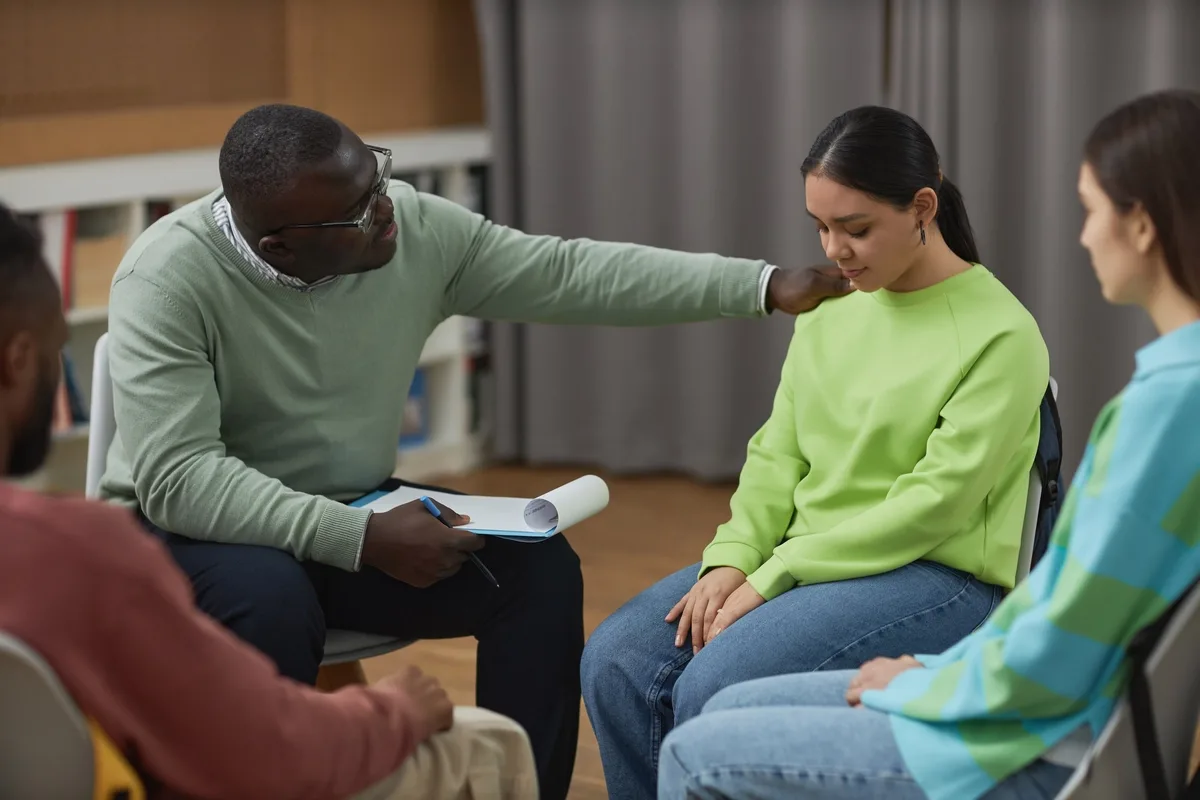
Behavioral Health Group
Behavioral Health Group is a private rehab located in Poplar Bluff, Missouri. Behavioral Health Grou...

Kansas City Psychiatric Services
Kansas City Psychiatric Services is a private rehab located in Independence, Missouri. Kansas City P...

New Horizons
New Horizons is a private rehab located in Columbia, Missouri. New Horizons specializes in the treat...

Gateway Alcohol and Drug Treatment Center
Gateway Alcohol and Drug Treatment Center, in Saint Louis, Missouri, is a 12 step focused outpatient...

George Norman Jr. Recovery Center
George Norman Jr. Recovery Center offers outpatient services for those individuals struggling with s...

Heartland Behavioral Health Services
Heartland Behavioral Health Services, located in Nevada, Missouri, provides alcohol and drug rehab s...

Ozark Center – Will’s Place
Ozark Center – Will’s Place is a private rehab located in Joplin, Missouri. Ozark Center – Will’s Pl...

Compass Health Network – Lebanon
Compass Health Network – Lebanon is a private rehab located in Lebanon, Missouri. Compass Health Net...

CenterPointe Outpatient Services – Saint Peters
CenterPointe Outpatient Services – Saint Peters is a branch of the CenterPointe Hospital. It is in t...

Mercy Behavioral Health
Mercy Behavioral Health is located in Springfield, Missouri. Mercy Behavioral Health offers a relaxe...

Northland Dependency Services
Northland Dependency Services is a private traditional rehab located in Kansas City, MO. Northland D...

Community Counseling Center
Community Counseling Center is a private, non-profit organization that serves individuals who are de...

CenterPointe Outpatient Services – South County
CenterPointe Outpatient Services–South County, in St. Louis, Missouri, is an outpatient mental healt...

Mercy Behavioral Health
Mercy Behavioral Health, located in Washington, Missouri, offers alcohol and drug rehab programs for...

Southeast Missouri Behavioral Health – Aquinas Center
Southeast Missouri Behavioral Health - Aquinas Center is a residential facility that offers treatmen...

Comtrea Community Treatment
Comtrea Community Treatment, in High Ridge, Missouri, offers mental health care and addiction recove...

Pathways Community Health
Pathways Community Health - West US 40 Highway provides mental health and substance use disorder tre...

Mercy Clinic Behavioral Health
Mercy Clinic Behavioral Health is located in Springfield, Missouri. Mercy Clinic Behavioral Health o...

Compass Health Network – Butler
Pathways Community Health - North Orange Street provides mental health and substance use disorder tr...

Comtrea Community Treatment
Comtrea Community Treatment is a private rehab located in Arnold, Missouri. Comtrea Community Treatm...

Pathways Community Health
Pathways Community Health - 319 Main Street provides mental health and substance use disorder treatm...

Research Psychiatric Center
Research Psychiatric Center is located in Kansas City, Missouri. Research Psychiatric Center offers ...
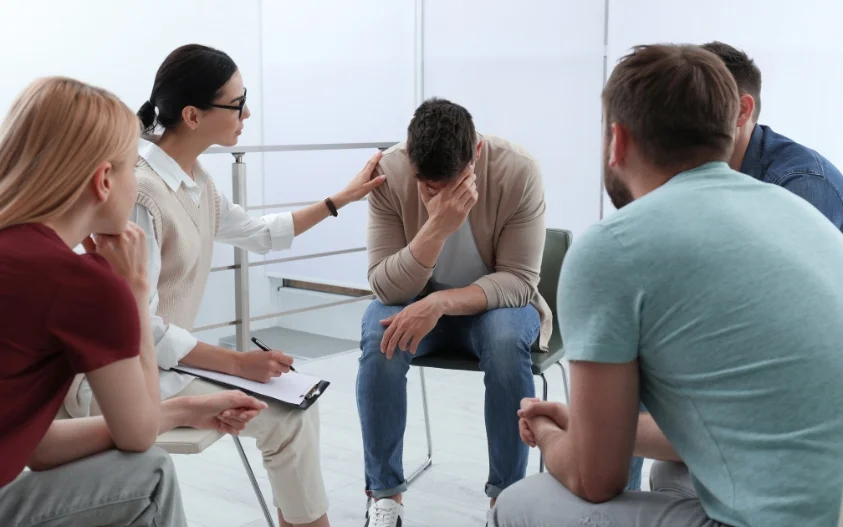
Compass Health Network – NAVIG8 Adolescent Treatment Program
Pathways Community Health - Navig8 Adolescent Treatment Program's services include adolescent substa...

Family Guidance Center for Behavioral Health
Family Guidance Center for Behavioral Health is a non-profit rehab located in Cameron, Missouri. Fam...

Compass Health Network – Cedar Recovery Center
Pathways Community Health provides substance use treatment with a focus on mental health, co-occurri...

Preferred Family Healthcare
Preferred Family Healthcare offers a residential and outpatient program, CPRC, RCF, Prevention, Heal...

Madison Avenue Psychological Services
Madison Avenue Psychological Services is a private rehab located in Kansas City, Missouri. Madison A...

Preferred Family Healthcare
Preferred Family Healthcare offers an outpatient program and SATOP. Preferred Family Healthcare is l...

Burrell Behavioral Health
Burrell Behavioral Health, located in Springfield, Missouri, offers programs to help individuals of ...
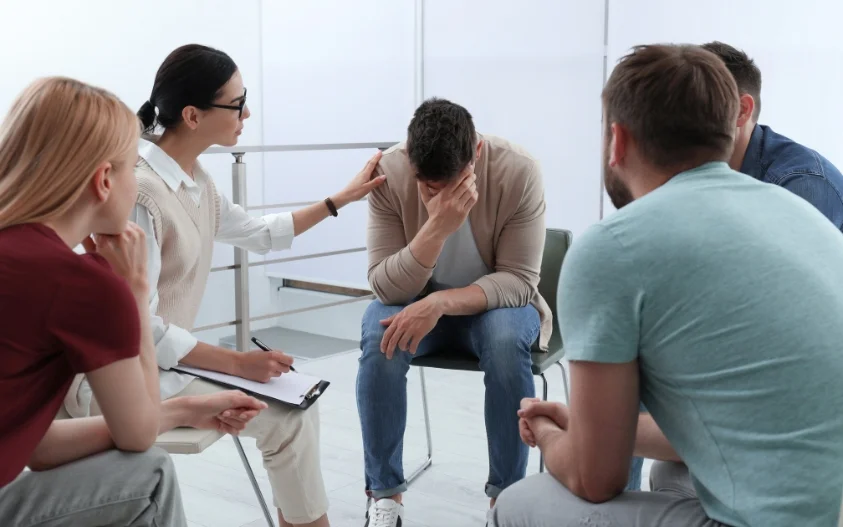
ReDiscover – Transitions
ReDiscover - Transitions offers an opioid treatment program that assists people struggling with a na...

Signature Behavioral Healthcare
Signature Behavioral Healthcare is located in Lenexa, Kansas. Signature Behavioral Healthcare offers...

Preferred Family Healthcare – Adolescent Residential
Preferred Family Healthcare (PFH) is a CARF-accredited substance abuse rehab center in Kansas City, ...

The Aviary Recovery Center
The Aviary Recovery Center - Smizer Mill Road located in Fenton, Missouri. The Aviary Recovery Cente...

Compass Health Network – Sullivan
Pathways Community Health - Progress Drive provides mental health services for children and adults. ...
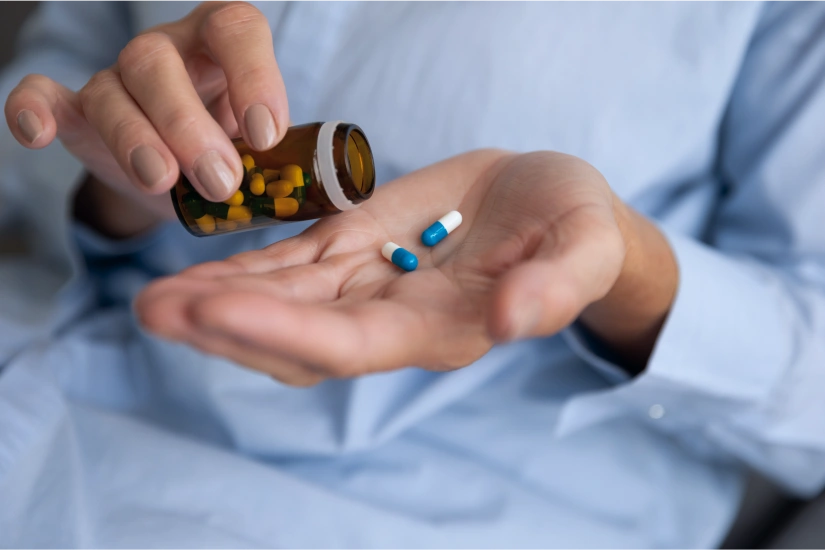
Mercy Clinic Psychology – Medical Gardens
Mercy Clinic Psychology - Medical Gardens is located in Springfield, Missouri. Mercy Clinic Psycholo...
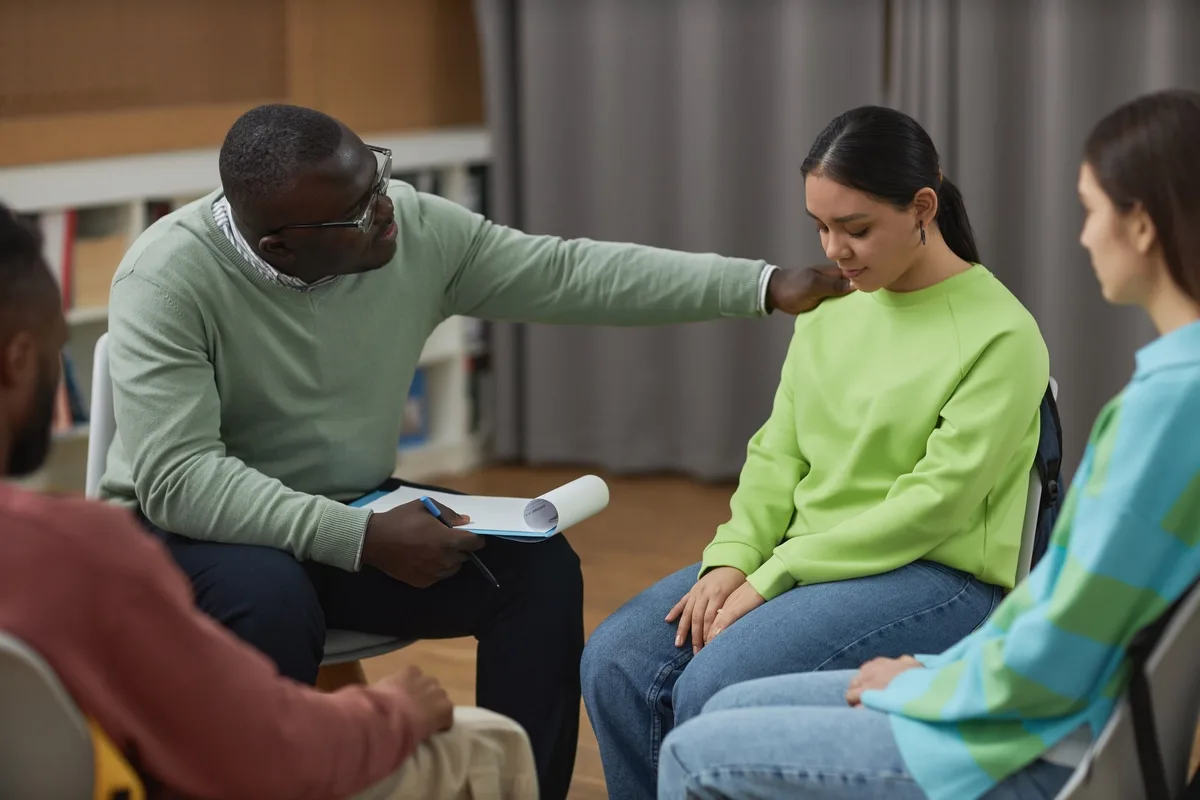
Signature Psychiatric Hospital
Signature Psychiatric Hospital is an alcohol and drug abuse treatment center in North Kansas City, M...

Mercy Clinic Psychiatry
Mercy Clinic Psychiatry is located in Festus, Missouri. Mercy Clinic Psychiatry provides medical man...

Ozarks Counseling Center
Ozarks Counseling Center provides affordable and quality counseling for those individuals dealing wi...

Compass Health Network – Windsor
Compass Health Network – Windsor is a private rehab located in Windsor, Missouri. Compass Health Net...

Mercy Clinic Psychiatry
Mercy Clinic Psychiatry is located in Springfield, Missouri. Mercy Clinic Psychiatry provides medica...
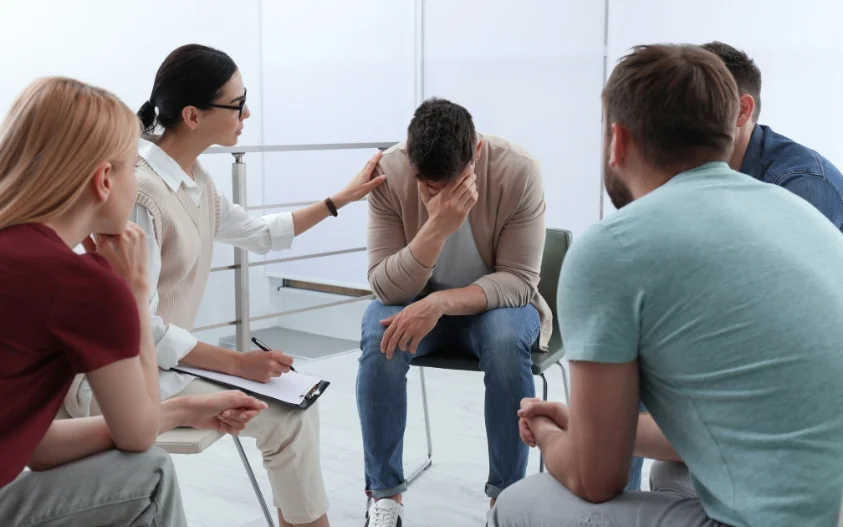
FCC Behavioral Health – Dunklin County Clinic
FCC Behavioral Health is a private, non-profit community behavioral health center with a proven hist...

Burrell Behavioral Health – Grand Street
Burrell Behavioral Health - Grand Street offers a complete service line of treatment approaches for ...

Comtrea
Comtrea is a private rehab located in Festus, Missouri. Comtrea specializes in the treatment of alco...

Great Circle
Great Circle is a private rehab located in Springfield, Missouri. Great Circle specializes in the tr...

First Call Alcohol and Drug Prevention and Recovery
First Call Alcohol and Drug Prevention and Recovery is a non-profit rehab located in Kansas City, Mi...

Synergy Executive
Synergy Executive is a private rehab located in Ozark, Missouri. Synergy Executive specializes in th...

INSynergy
INSynergy offers innovative and comprehensive addiction treatment. They offer CBT therapy, Vivitrol,...
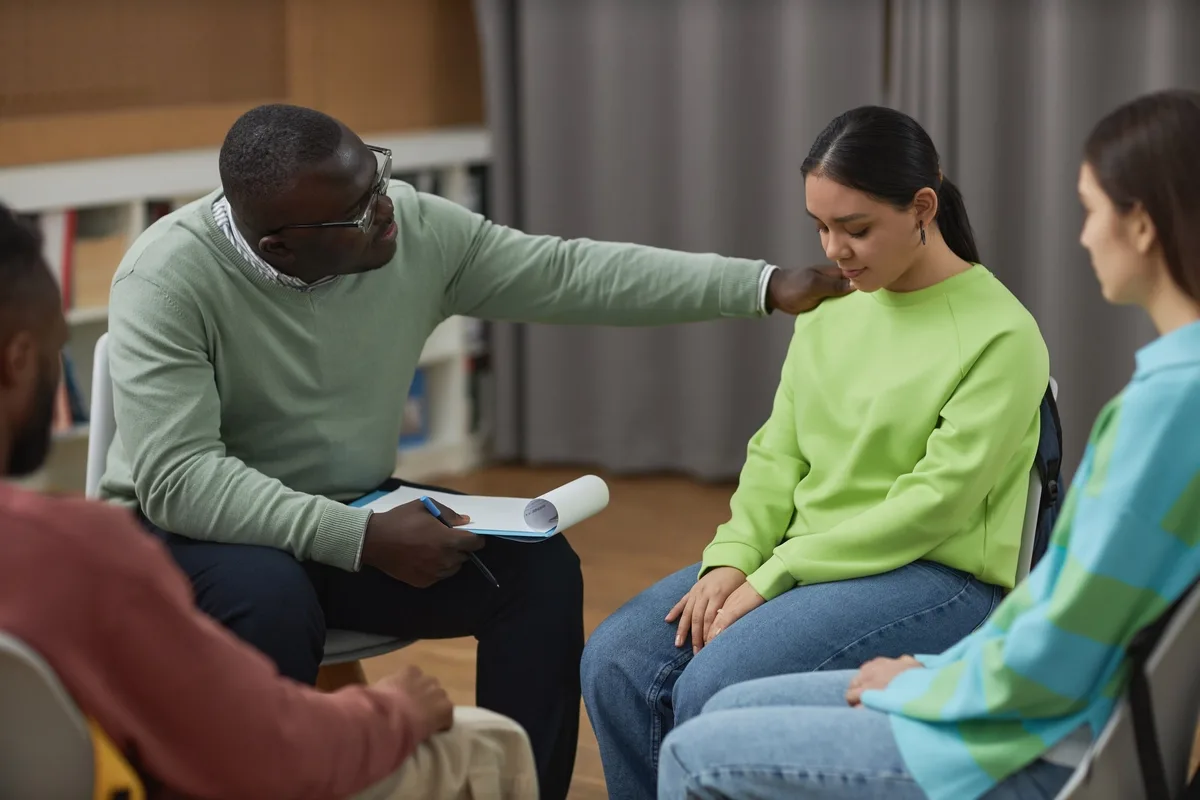
Concordance Academy – Re Entry Model
Concordance Academy assists individuals returning from prison. They offer the first set of holistic,...

Compass Health Network – NAVIG8 Adolescent Treatment Program
Compass Health Network – NAVIG8 Adolescent Treatment Program is a private rehab located in Rolla, Mi...

Mercy Multiplied
Mercy Multiplied, in Fenton, Missouri, is a no cost, nonprofit, faith based drug and alcohol rehab f...
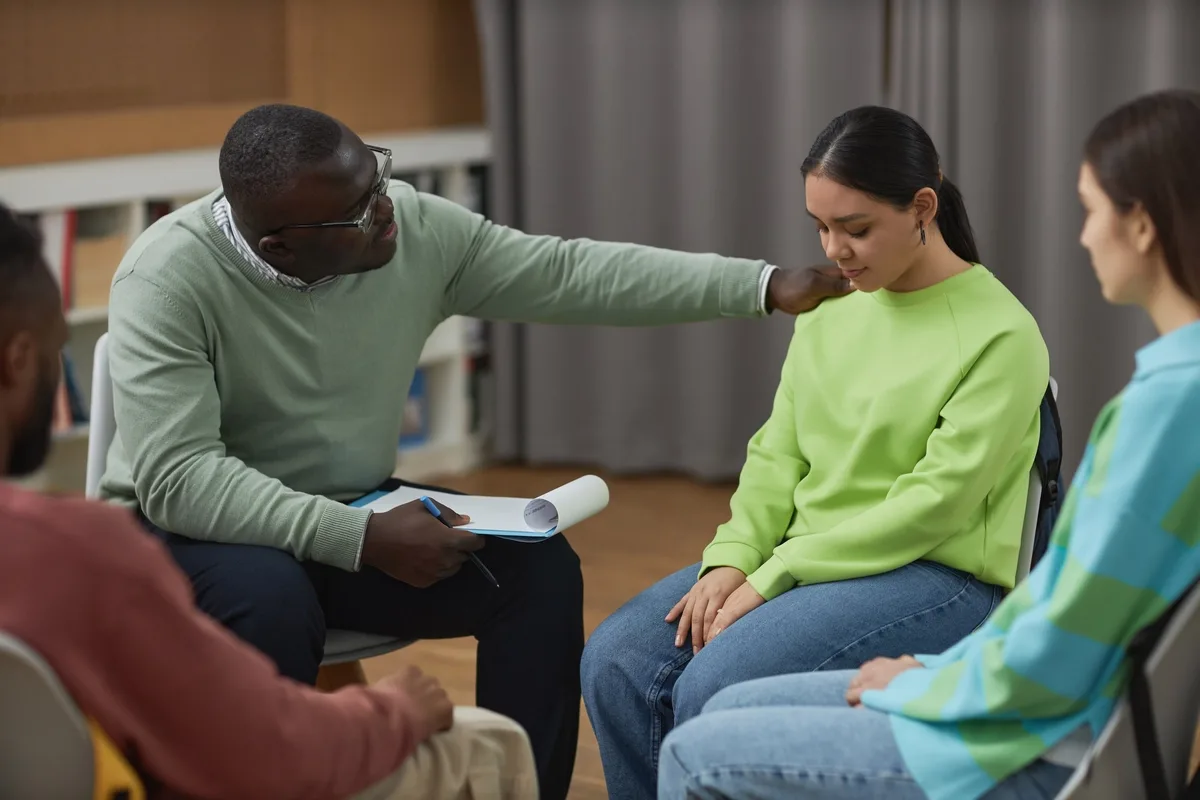
Guadalupe Centers Substance Abuse Program
Guadalupe Centers Substance Abuse Program offers outpatient program for individuals with addiction i...

Mission Teens – Freedom House MBTC
Mission Teens - Freedom House MBTC is a non-denominational Christian Discipleship located in Holcomb...

North Central Missouri Mental Health Center
North Central Missouri Mental Health Center serves the nine counties of the Green Hills area. They p...

Lakeland Behavioral Health System
Lakeland Behavioral Health System is a private rehab located in Springfield, MO. Lakeland Behavioral...

Avenues Counseling Center
Avenues Counseling Center is a private rehab located in Saint Louis, Missouri. Avenues Counseling Ce...

New Season – St. Louis Metro Treatment Center
The New Season St. Louis Metro Treatment Center stands as a reputable substance abuse rehab center l...

New Season – St. Joseph Metro Treatment Center
New Season - St. Joseph Metro Treatment Center is a private rehab located in Saint Joseph, MO. New S...

Shepherds Fold Rehabilitation
Shepherds Fold Rehabilitation is a private rehab located in Cardwell, Missouri. Shepherds Fold Rehab...

The Crossroads Program
The Crossroads Program stands as a drug and alcohol rehab center providing a treatment program for a...

CenterPointe Hospital Addiction Treatment
CenterPointe Hospital is a premier provider of behavioral health care services in St. Louis, deliver...

Lakeland Behavioral Health System – Grand Street
Lakeland Behavioral Health System - Grand Street is a behavioral health care and mental health treat...

Calo Programs
Calo Programs is a private rehab located in Lake Ozark, Missouri. Calo Programs specializes in the t...

Assisted Recovery Centers of America
Assisted Recovery Centers of America is a private rehab located in Town And Country, Missouri. Assis...

Heartland Center for Behavioral Change – Northland Outpatient Clinic
Heartland Center for Behavioral Change – Northland Outpatient Clinic is a non-profit rehab located i...

New Season – St. Charles Treatment Center
The New Season St. Charles Treatment Center stands as a reputable substance abuse rehab center in Sa...

INSynergy – Personalized Addiction Treatment
INSynergy is a drug and alcohol addiction rehab center located in Saint Louis, MO. It provides men a...

New Season – Cape Girardeau Metro Treatment Center
New Season - Cape Girardeau Metro Treatment Center is a private rehab located in Cape Girardeau, MO....

INSynergy
INSynergy is a private rehab located in Saint Louis, Missouri. INSynergy specializes in the treatmen...

Hotel California by the Sea – St. Louis
Hotel California by the Sea – St. Louis is a private rehab located in Saint Louis, Missouri. Hotel C...

Compass Health Network – Troy
Pathways - Hospital Road offers outpatient treatment for individuals with alcohol and/or substance a...

Compass Health Network – Clinton
Compass Health Network – Clinton is a private rehab located in Higginsville, Missouri. Compass Healt...

Heartland Center for Behavioral Change
Heartland Center for Behavioral Change located in Springfield, MO serves adult men and women who are...

Family Guidance Center – Felix Street
Family Guidance Center – Felix Street is a private rehab located in Saint Joseph, Missouri. Family G...

Moments and Milestones Counseling
Moments and Milestones Counseling is a private rehab located in Springfield, Missouri. Moments and M...

ReDiscover
ReDiscover is a nonprofit community mental health agency that offers a full spectrum of programs and...

Mercy Hospital – Behavioral Health
Mercy Hospital - Behavioral Health is located in Saint Louis, Missouri. Mercy Hospital - Behavioral ...

Burrell Behavioral Health – South Campbell
Burrell Behavioral Health - South Campbell offers specialized services for addiction for those indiv...

Heartland Center for Behavioral Change – Free & Clean
Heartland Center's Free & Clean program serves adult men under Probation & Parole with the MO Dept. ...

Harris House Treatment on South Broadway
Harris House Treatment on South Broadway is a private rehab located in Saint Louis, Missouri. Harris...

The Simmering Center
The Simmering Center provides safe, structured drug and alcohol recovery housing. They are staffed 2...

ReDiscover – Independence Avenue
ReDiscover, a nonprofit community mental health center, provides comprehensive programs and services...

Compass Health Network – Owensville
Pathways Community Health’s Owensville, Missouri office is located at 704 E. Hwy 28 and provides men...

Preferred Family Healthcare
Preferred Family Healthcare offers an outpatient program for adolescents. Preferred Family Healthcar...

Preferred Family Healthcare – Bridgeway Behavioral Health
Preferred Family Healthcare - Bridgeway Behavioral Health is located in Montgomery City, Missouri. P...

ReDiscover – Loma Vista
ReDiscover - Loma Vista offers an opioid treatment program that assists people struggling with a nar...

Turning Point Recovery Centers
Turning Point Recovery Centers, located in Hannibal, Missouri, is an alcohol and drug treatment prog...

Northland Dependency Services
Northland Dependency Services is a counseling-clinic rehab located in Liberty, MO. Northland Depende...
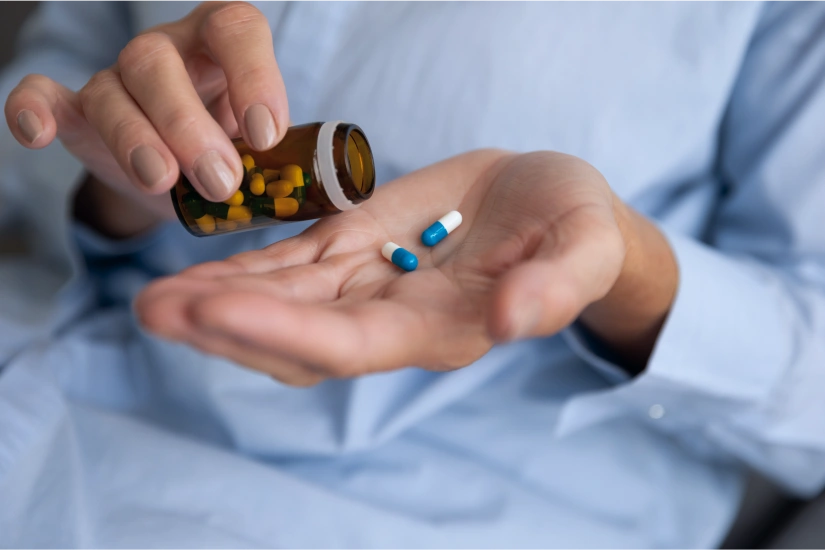
FCC Behavioral Health – Pemiscot County Clinic
FCC Behavioral Health- Pemiscot County Clinic is a satellite outpatient clinic located in Caruthersv...

Heartland Center for Behavioral Change – 1534 Campbell
Heartland Center for Behavioral Change provides behavioral healthcare and substance use disorder tre...

Heartland Center for Behavioral Change – Independence Outpatient Clinic
Heartland Center for Behavioral Change in Independence serves adult men and women of the East KC are...

Preferred Family Healthcare
Preferred Family Healthcare is located in Sappington, Missouri. Preferred Family Healthcare provides...

Southeast Missouri Behavioral Health
Southeast Missouri Behavioral Health is an outpatient facility that offers treatment for individuals...

Freeman Behavioral Health Services
Freeman Behavioral Health Services is a private rehab located in Joplin, Missouri. Freeman Behaviora...

Gibson Recovery Center
Gibson Recovery Center is a non-profit rehab located in Sikeston, Missouri. Gibson Recovery Center s...

Preferred Family Healthcare – Bridgeway Behavioral Health – Delmar
The Preferred Family Healthcare Delmar facility stands as a substance abuse rehab center in Saint Lo...

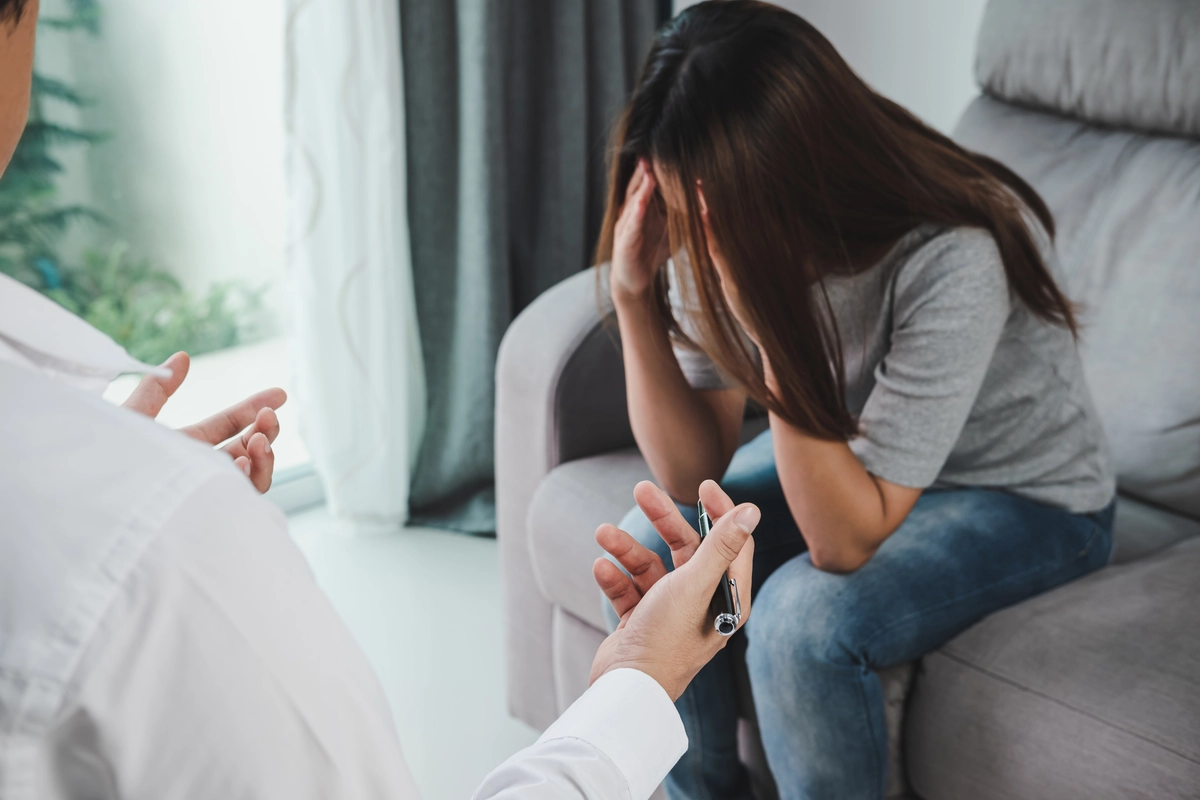





























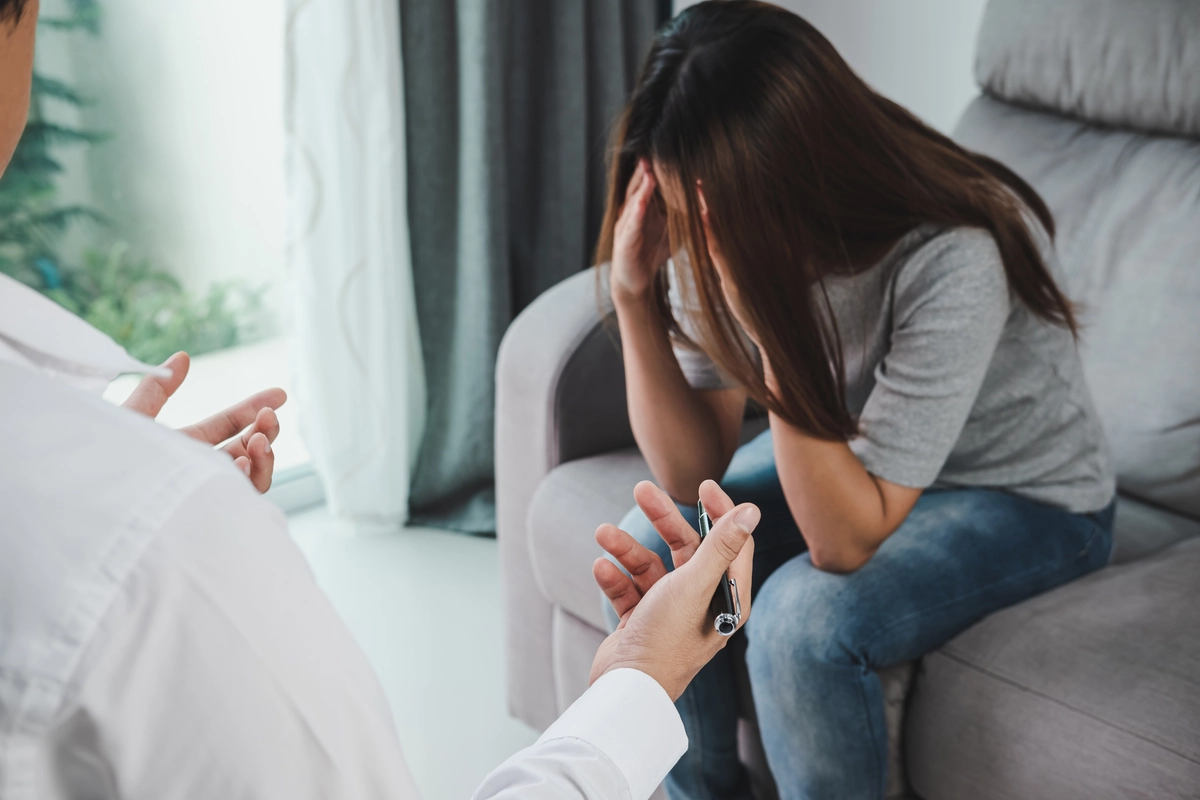
















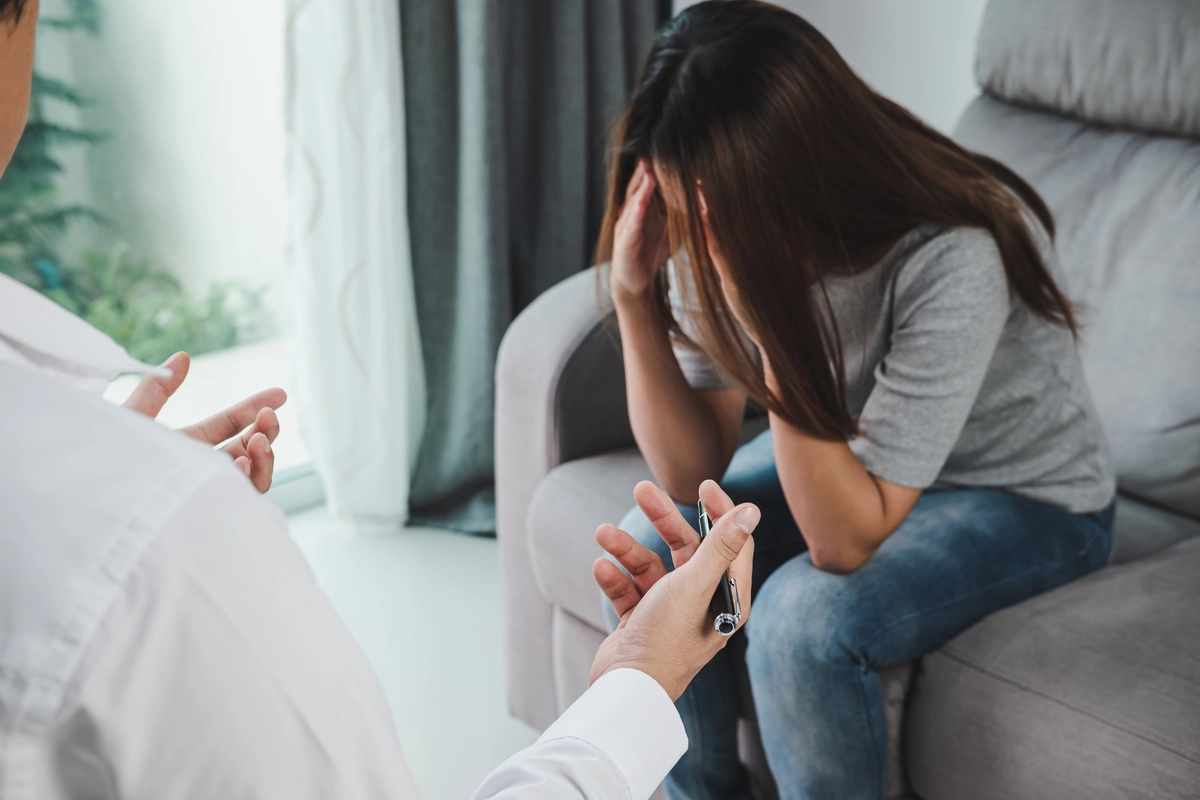















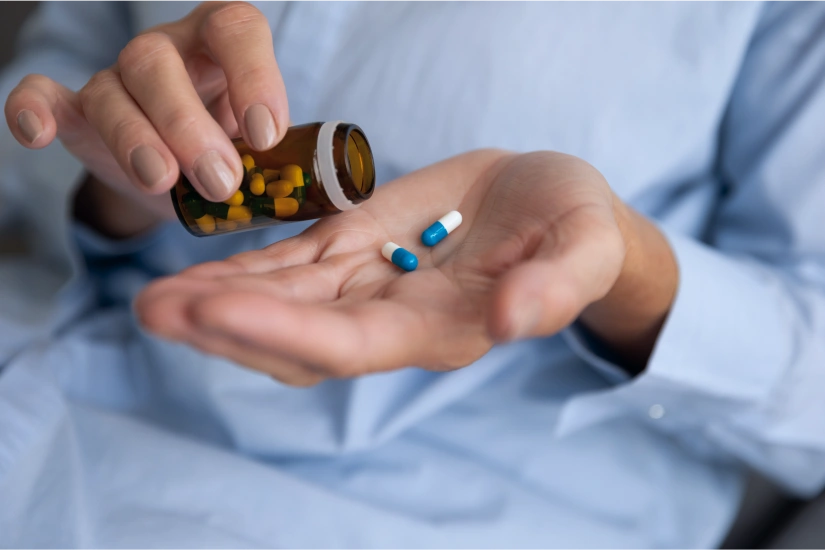


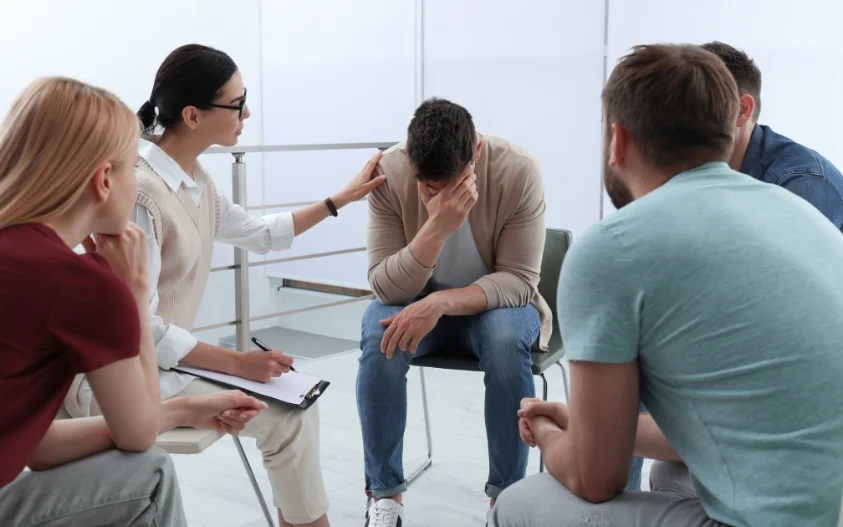












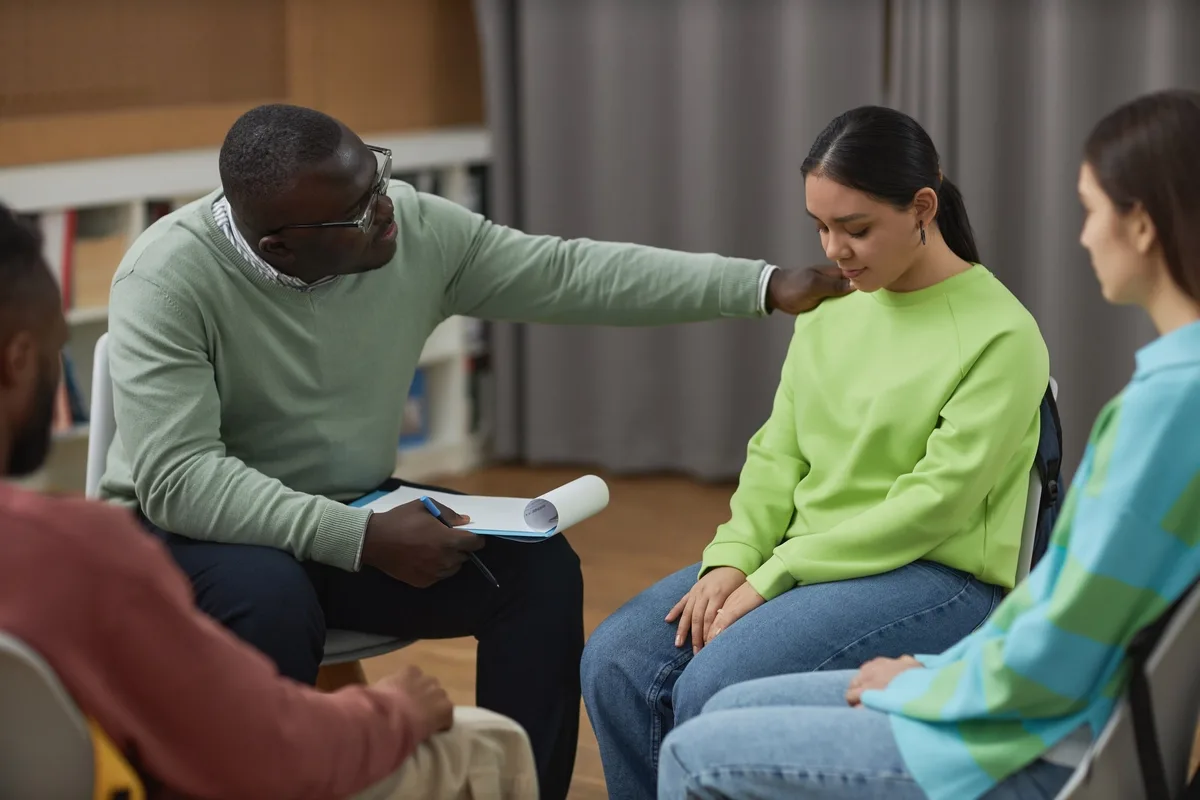




























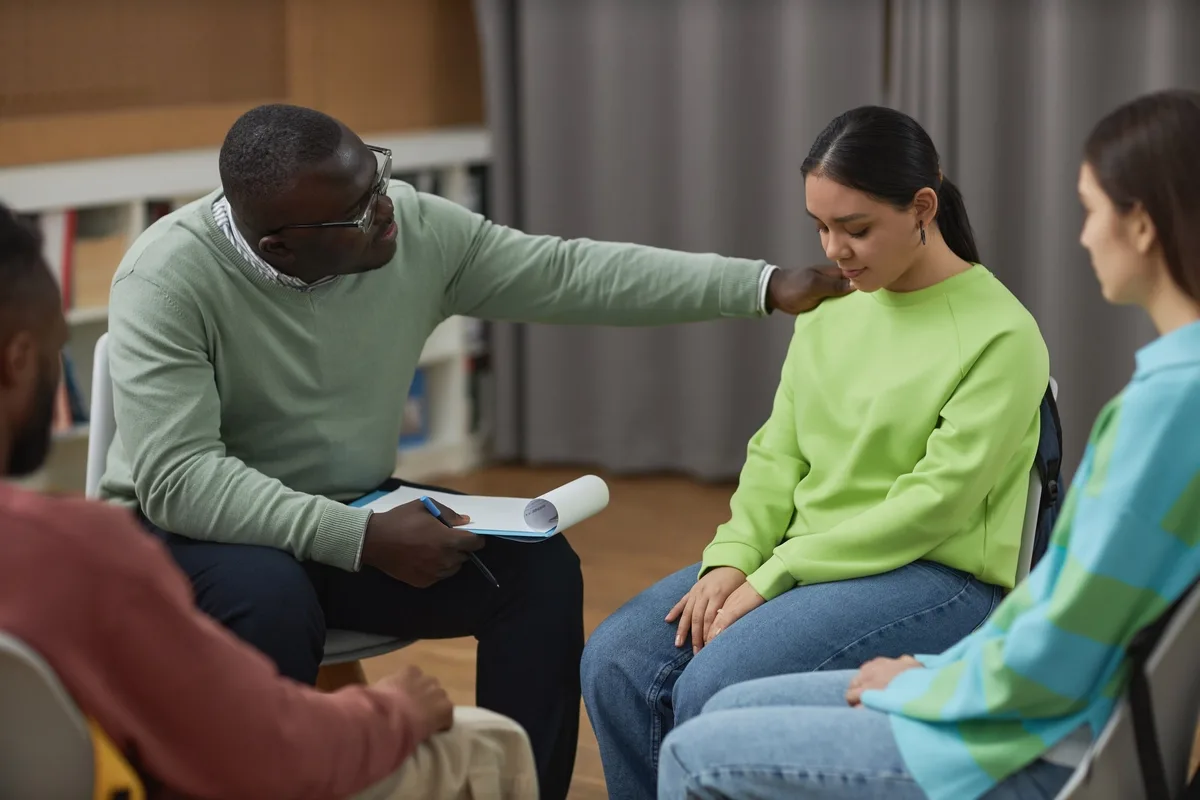

















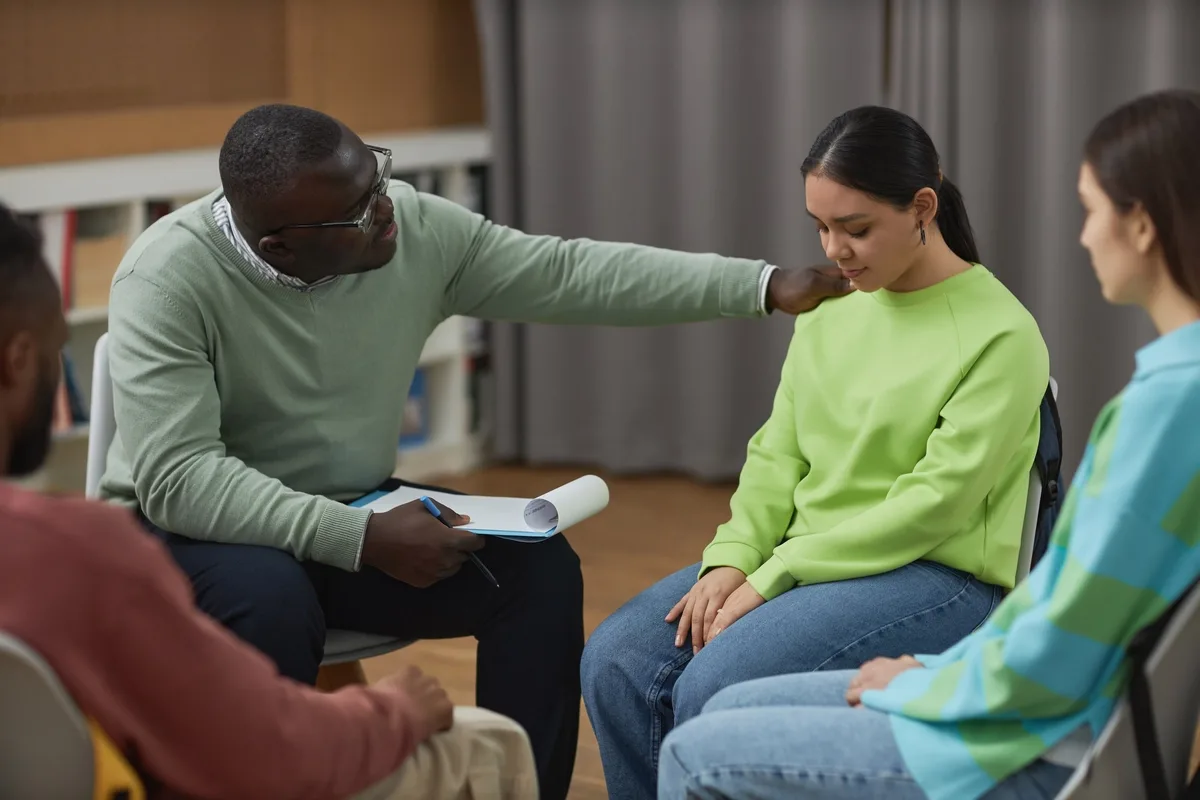







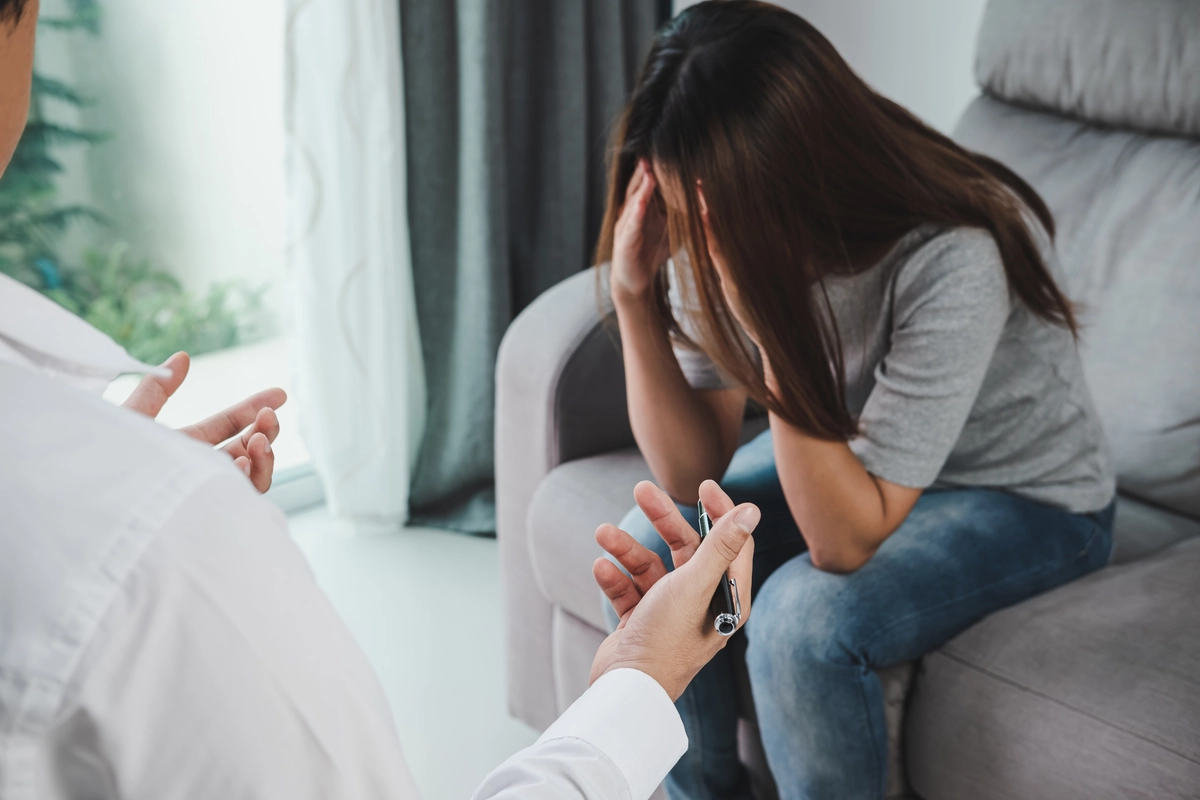












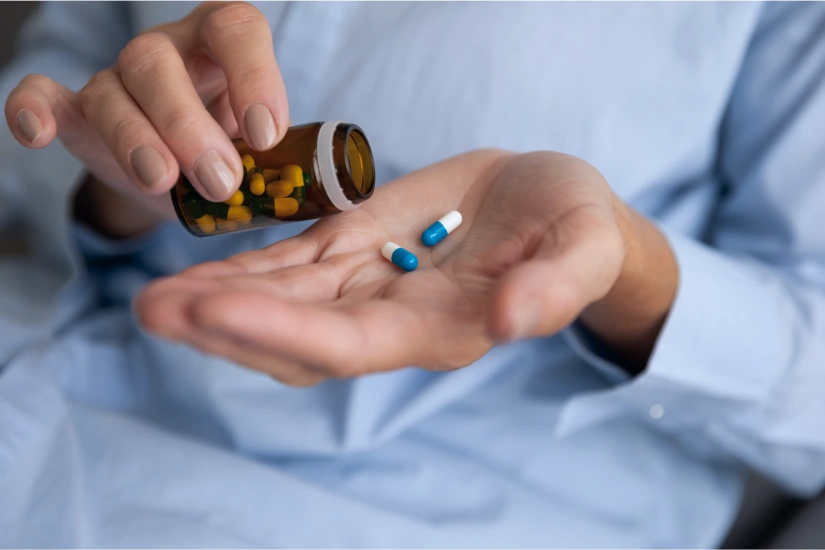


Compass Health Network – Moberly
Compass Health Network - Moberly, located in Moberly, Missouri, offers alcohol and drug rehab servic...

Oxford House – Quail
Oxford House – Quail is a private rehab located in Columbia, Missouri. Oxford House – Quail speciali...

Heartland Recovery Programs – Men’s Program
Heartland Recovery Programs - Men's Program is a faith-based addiction treatment center for men, loc...

Ozark Center – New Directions
Ozark Center – New Directions is a private rehab located in Lamar, Missouri. Ozark Center – New Dire...

Mid Missouri Counseling
Mid Missouri Counseling is a private rehab located in Richmond, Missouri. Mid Missouri Counseling sp...

AA – Alcoholics Anonymous – Group
AA – Alcoholics Anonymous – Group is a non-profit rehab located in Kansas City, Missouri. AA – Alcoh...

AA – Alcoholics Anonymous – Battlefield Street
AA – Alcoholics Anonymous – Battlefield Street is a non-profit rehab located in Springfield, Missour...

Great Circle – Columbia
KVC Missouri (previously Great Circle) is a nonprofit facility that aims to strengthen families in C...

The Crossroads Program
The Crossroads Program is treatment program for teens or young adults struggling with substance abus...

Options Unlimited
Options Unlimited is a private rehab located in Mexico, Missouri. Options Unlimited specializes in t...

AA – Alcoholics Anonymous – Pine Street
Alcoholics Anonymous is an international fellowship of men and women who have had a drinking problem...

Southeast Missouri Behavioral Health
Southeast Missouri Behavioral Health is an outpatient facility that offers treatment for individuals...

East Central Missouri Behavioral Health – Arthur Center
East Central Missouri Behavioral Health - Arthur Center offers mental health treatment and behaviora...

Community Counseling Center
Community Counseling Center is a private, non-profit organization that serves individuals who are de...

AA – Alcoholics Anonymous
AA – Alcoholics Anonymous is a non-profit rehab located in Harrisonville, Missouri. AA – Alcoholics ...

Advanced Psychiatric Services
Advanced Psychiatric Services is a private rehab located in Festus, MO. Advanced Psychiatric Service...
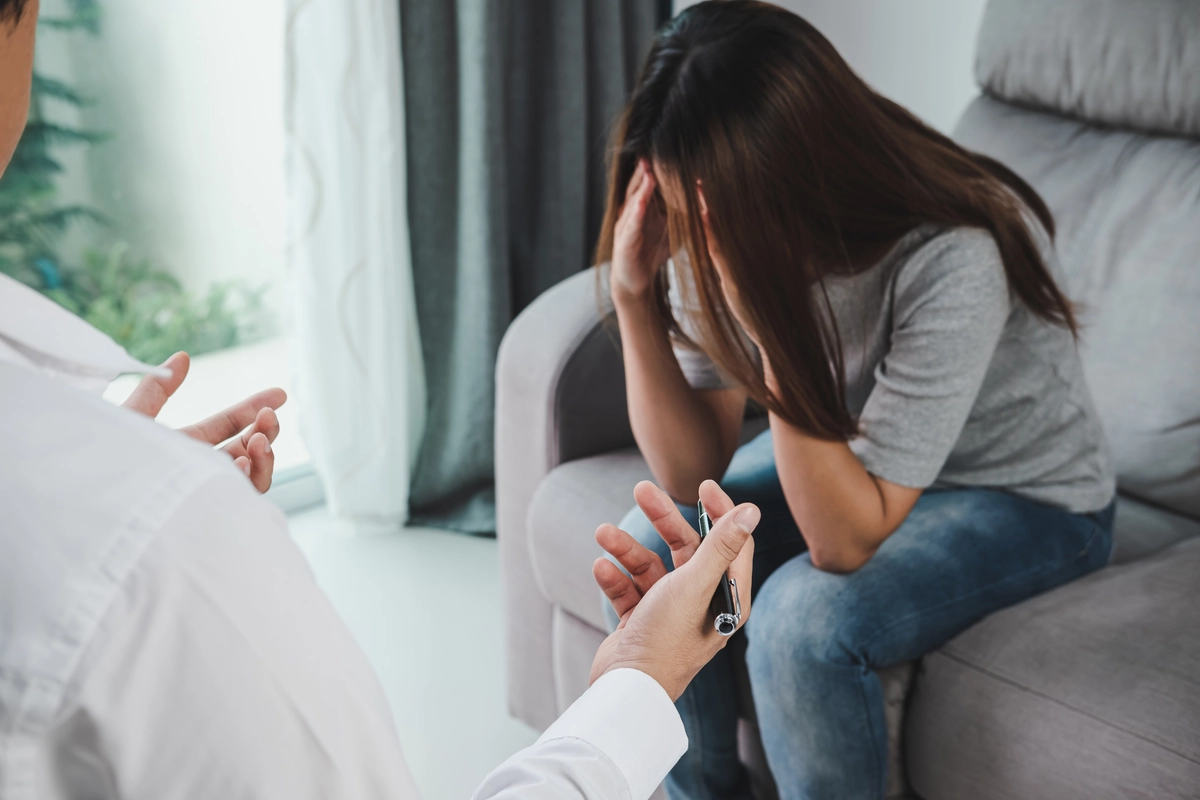
BJC Behavioral Health – North Division
BJC Behavioral Health–North Division provides personalized mental health care and addiction recovery...

Truman Medical Centers – Behavioral Health
Truman Medical Centers is a hospital located in Kansas City, MO. Truman Medical Centers specializes ...

Great Circle – Saint Louis
Great Circle – Saint Louis is a private rehab located in Saint Louis, Missouri. Great Circle – Saint...

AA – Alcoholics Anonymous
AA – Alcoholics Anonymous is a non-profit rehab located in Osage Beach, Missouri. AA – Alcoholics An...
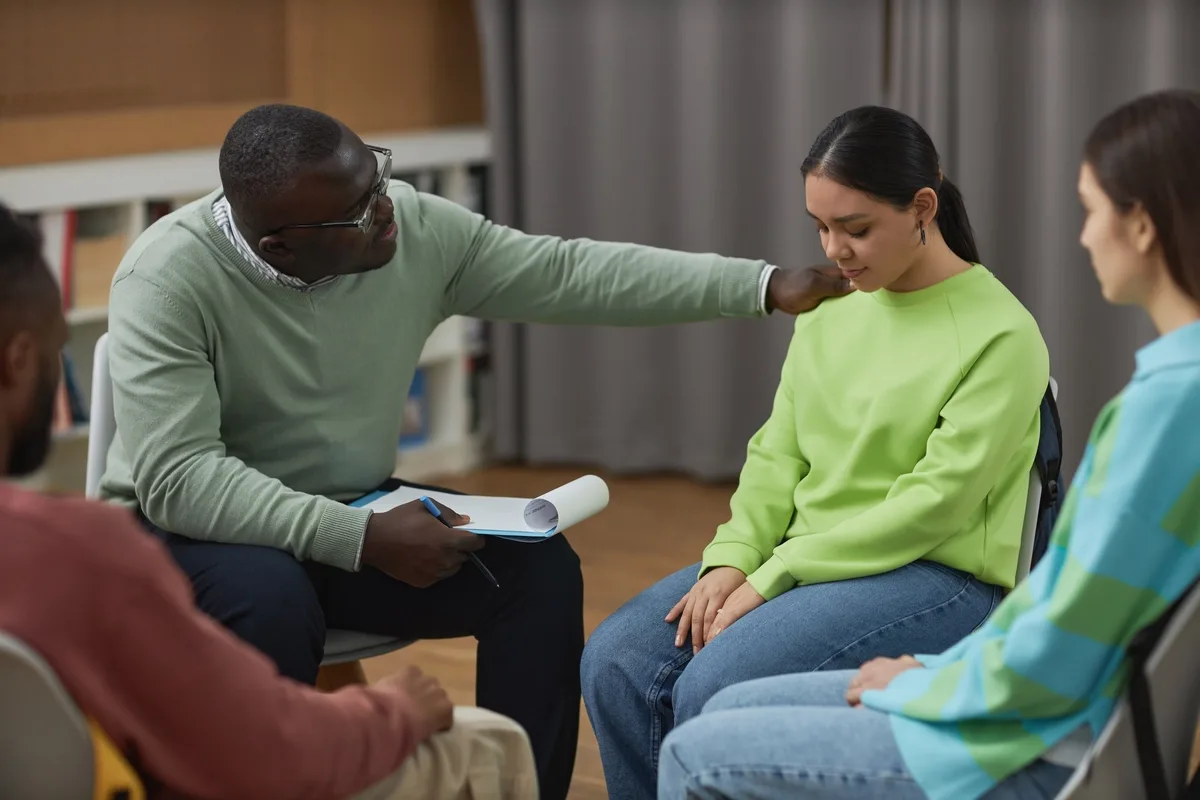
Midwest Alcohol and Drug Program
Midwest Alcohol and Drug Program is a private rehab located in Kansas City, Missouri. Midwest Alcoho...

Turning Point Recovery Centers
Turning Point Recovery Centers want to improve the quality of life of every consumer at the communit...

Burrell Behavioral Health – Cherry Street
Burrell Behavioral Health - Cherry Street is a non-profit organization that provides a wide range of...

The Crossroads Program
The Crossroads Program is a rehab center that provides dual-diagnosis addiction treatment in Chester...

Tri County Mental Health Services – Parvin Road
The Tri-County Mental Health Services Parvin Road facility is a behavioral health center in Kansas C...

National Council on Alcohol and Drug Dependency
National Council on Alcohol and Drug Dependency is a private rehab located in Kansas City, Missouri....

Maranatha Treatment Program
Maranatha Treatment Program is a private rehab located in Kansas City, Missouri. Maranatha Treatment...

FCC Behavioral Health – Butler County Clinic
FCC Behavioral Health is a private, non-profit community behavioral health center with a proven hist...

Community Counseling Center
Community Counseling Center is a private, non-profit organization that serves individuals who are de...

Heartland Center for Behavioral Change
Heartland Center for Behavioral Change is a private, not for profit, charitable organization dedicat...
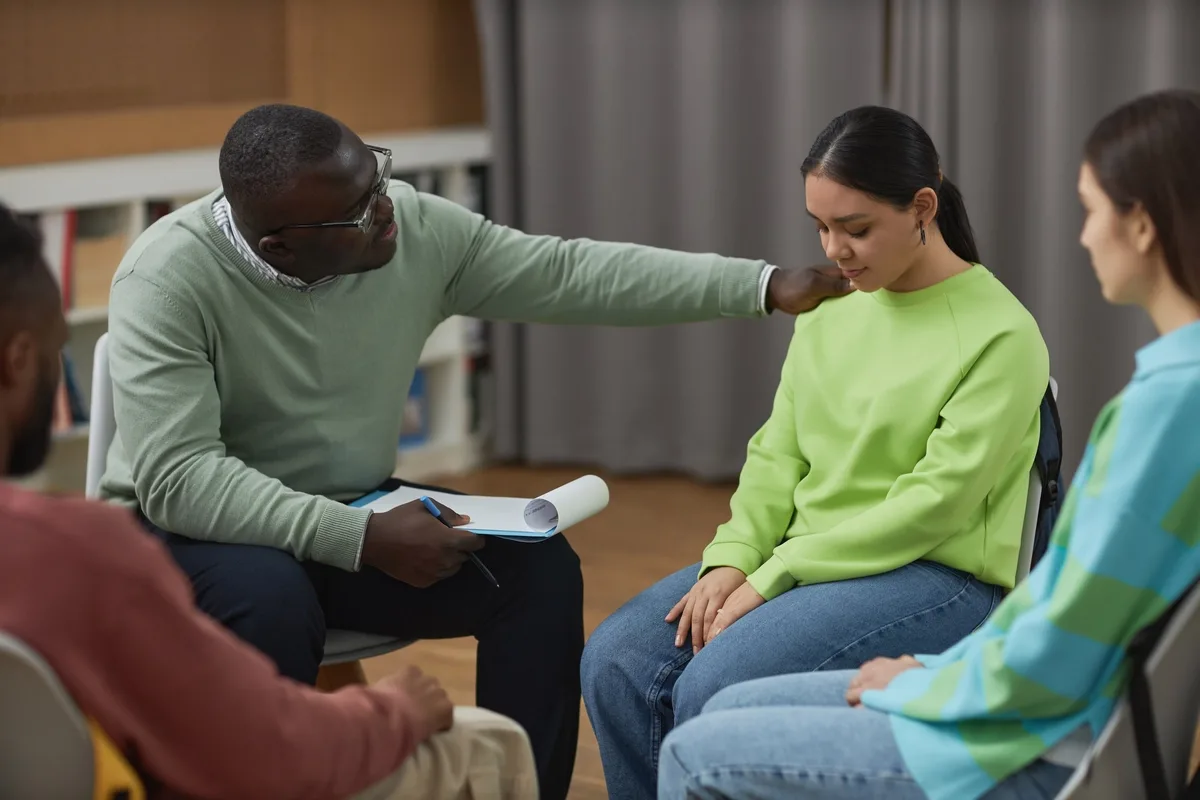
FCC Behavioral Health – Adolescent CSTAR
FCC Behavioral Health is a private, non-profit community behavioral health center with a proven hist...

Central State MHC
Central State MHC provides substance abuse treatment in an outpatient setting for people in Jackson,...

Pathways Behavioral Health
Pathways Behavioral Health - Deadra Drive provides mental health and substance use disorder treatmen...

Twin Rivers Regional Medical Center – Behavioral Health
Twin Rivers Regional Medical Center – Behavioral Health is a private rehab located in Kennett, Misso...

St Louis County Community Services
St Louis County Community Services is a private rehab located in Saint Louis, Missouri. St Louis Cou...

Bootheel Counseling Services
Bootheel Counseling Services offers outpatient counseling services for individuals or families strug...

Gibson Recovery Center
Gibson Center for Behavioral Change is an accredited drug and alcohol treatment rehab in Cape Girard...

FCC Behavioral Health
FCC Behavioral Health is designed to comprehensively meet the wellness needs of seriously mentally i...

Phoenix Programs – Residential
Phoenix Programs – Residential is a private rehab located in Columbia, Missouri. Phoenix Programs – ...

Preferred Family Healthcare – Adolescent
Preferred Family Healthcare – Adolescent is a private rehab located in Troy, Missouri. Preferred Fam...

A and M Recovery
A and M Recovery is a private rehab located in Springfield, MO. A and M Recovery specializes in the ...

AA – Alcoholics Anonymous
AA – Alcoholics Anonymous is a non-profit rehab located in Sunrise Beach, Missouri. AA – Alcoholics ...

AA – Alcoholics Anonymous – Chapter 5 Claycomo Group
AA – Alcoholics Anonymous – Chapter 5 Claycomo Group is a non-profit rehab located in Kansas City, M...

Sigma House of Springfield
Sigma House of Springfield is a private rehab located in Springfield, Missouri. Sigma House of Sprin...

Alcohol Recovery Care Unit
Alcohol Recovery Care Unit is a private rehab located in Kansas City, Missouri. Alcohol Recovery Car...

Compass Health Network – Union
Compass Health Network – Union is a private rehab located in Union, Missouri. Compass Health Network...
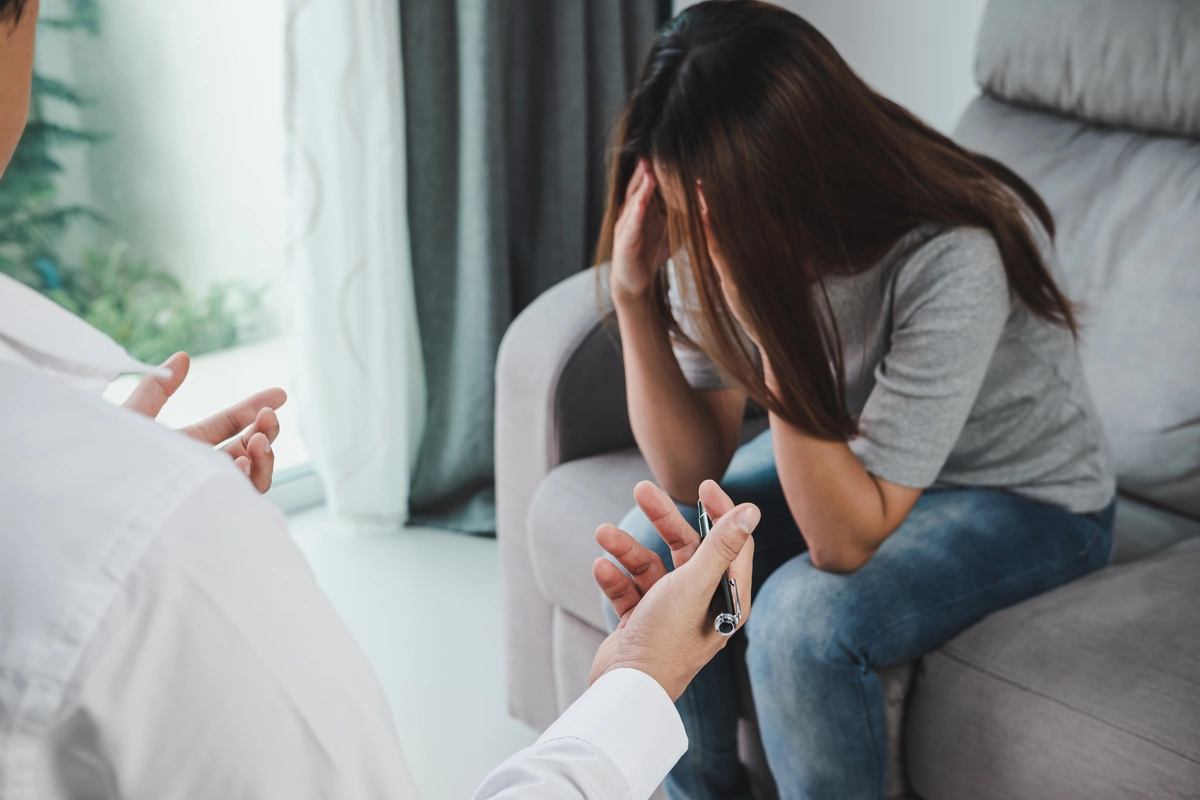
Correctional Counseling
Correctional Counseling is a private rehab located in Poplar Bluff, Missouri. Correctional Counselin...

Preferred Family Healthcare – Adolescent
Preferred Family Healthcare – Adolescent is a private rehab located in Wentzville, Missouri. Preferr...

AA – Alcoholics Anonymous
AA – Alcoholics Anonymous is a non-profit rehab located in Richmond, Missouri. AA – Alcoholics Anony...

Northland Dependency Services
Northland Dependency Services is a private rehab located in Excelsior Springs, Missouri. Northland D...

AA – Alcoholics Anonymous – Primary Purpose
AA – Alcoholics Anonymous – Primary Purpose is a non-profit rehab located in Jefferson City, Missour...

Preferred Family Healthcare
Preferred Family Healthcare offers an outpatient program, day treatment, and ARTC. Preferred Family ...

Gibson Recovery Center – Hillcrest Pointe
Gibson Recovery Center - Hillcrest Pointe is a private residential treatment facility located in the...

BJC Behavioral Health – South Site
BJC Behavioral Health – South Site is a private rehab located in Saint Louis, Missouri. BJC Behavior...

Synergy Services
Synergy Services is a private rehab located in Kansas City, Missouri. Synergy Services specializes i...

Deaf Hope
Deaf Hope is a private rehab located in Columbia, Missouri. Deaf Hope specializes in the treatment o...

FCC Behavioral Health
FCC Behavioral Health provides intensive outpatient and outpatient adult substance abuse treatment s...

Ozark Serenity Club
Ozark Serenity Club is a private rehab located in Branson, Missouri. Ozark Serenity Club specializes...

One Step Ministry
One Step Ministry is a private rehab located in Kansas City, Missouri. One Step Ministry specializes...

Family Counseling Center – Dunklin County
FCC Behavioral Health - Dunklin County provides intensive outpatient and outpatient adult substance ...

Ozark Center – Residential
Ozark Center provides substance abuse services, treatment and support networks for the community. Oz...

Community Counseling Center
Community Counseling Center is a private, non-profit organization that serves individuals who are de...

FCC Behavioral Health – Stapleton Center
FCC Behavioral Health- Stapleton Center, located in Hayti, Missouri, is a private, nonprofit, certif...

Preferred Family Healthcare – Bridgeway Behavioral Health
Preferred Family Healthcare - Bridgeway Behavioral Health offers an outpatient program, day treatmen...

North Central Missouri Mental Health Center – PSR Clubhouse
North Central Missouri Mental Health Center - PSR Clubhouse provides supportive in a variety of area...
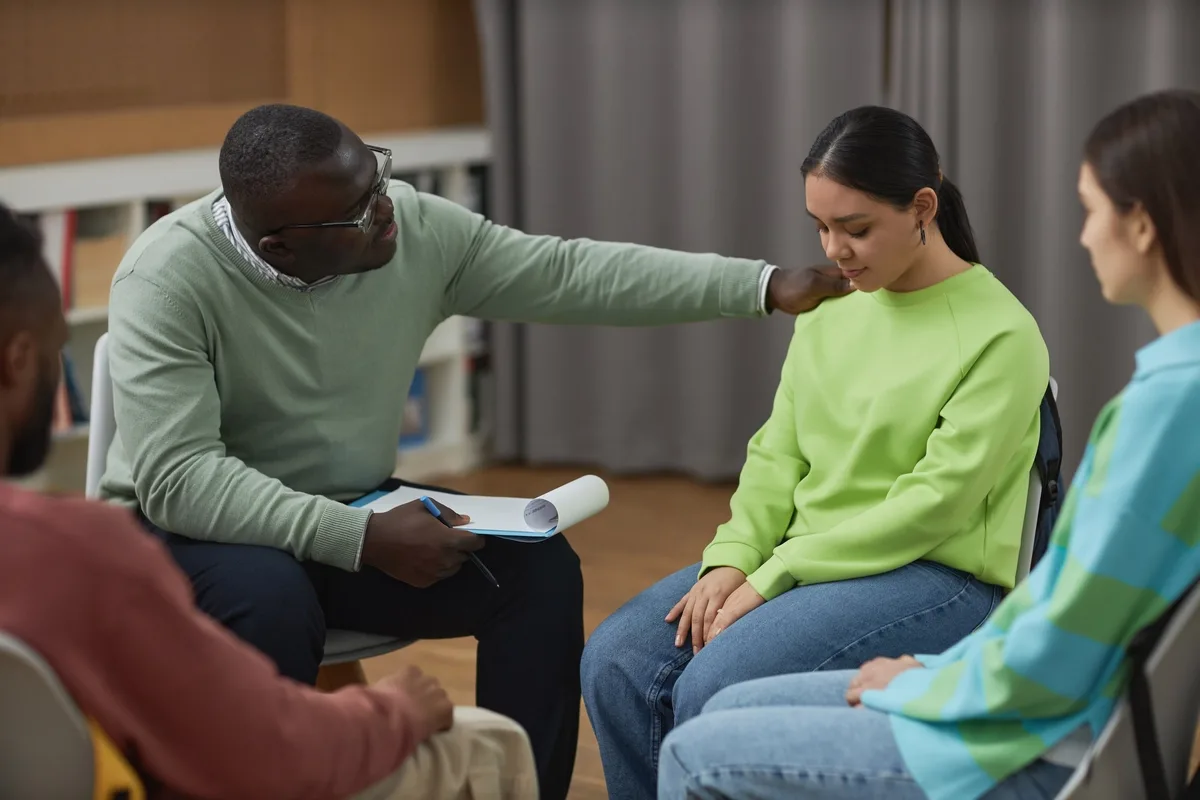
ReDiscover
ReDiscover is an alcohol and drug rehabilitation facility in Lee Summit, Missouri. Their two local f...

AA – Alcoholics Anonymous
AA – Alcoholics Anonymous is a non-profit rehab located in Blue Springs, Missouri. AA – Alcoholics A...

Valley Hope
Valley Hope of St. Louis provides a full range of outpatient substance use disorder services to adul...

AA – Alcoholics Anonymous – Liberty Group
AA – Alcoholics Anonymous – Liberty Group is a non-profit rehab located in Liberty, Missouri. AA – A...

Reach Out America
Reach Out America is a private rehab located in Liberty, Missouri. Reach Out America specializes in ...

Tri County Mental Health Services – Maple Woods
Tri County Mental Health Services – Maple Woods is a non-profit rehab located in Kansas City, Missou...

Preferred Family Healthcare – Adolescent
Preferred Family Healthcare – Adolescent is a private rehab located in Saint Joseph, Missouri. Prefe...

Rodgers South
Rodgers South is a private rehab located in Kansas City, Missouri. Rodgers South specializes in the ...

AA – Alcoholics Anonymous – Jefferson Street
AA – Alcoholics Anonymous – Jefferson Street is a non-profit rehab located in Jefferson City, Missou...

Southeast Missouri Behavioral Health
Southeast Missouri Behavioral Health is a non-profit rehab located in Waynesville, Missouri. Southea...

FCC Behavioral Health
FCC Behavioral Health provides intensive outpatient and outpatient adult substance abuse treatment s...

FCC Behavioral Health – Adolescent RISE
FCC Behavioral Health's RISE treatment center is an alcohol and substance abuse recovery center in W...

Pathways Community Health
Pathways Community Health - South Business Hwy provides mental health and substance use disorder tre...

Missouri Alcohol Assessment Consultants
Missouri Alcohol Assessment Consultants offers outpatient services for individuals with a Substance ...

Preferred Family Healthcare
Preferred Family Healthcare is a private rehab located in Milan, Missouri. Preferred Family Healthca...

Burrell Behavioral Health Center – Sigma House
Burrell Behavioral Health Center is an accredited dual-diagnosis addiction rehab in Springfield, MO....

Pathways Behavioral Health
Pathways Behavioral Health is a private rehab located in Farmington, Missouri. Pathways Behavioral H...
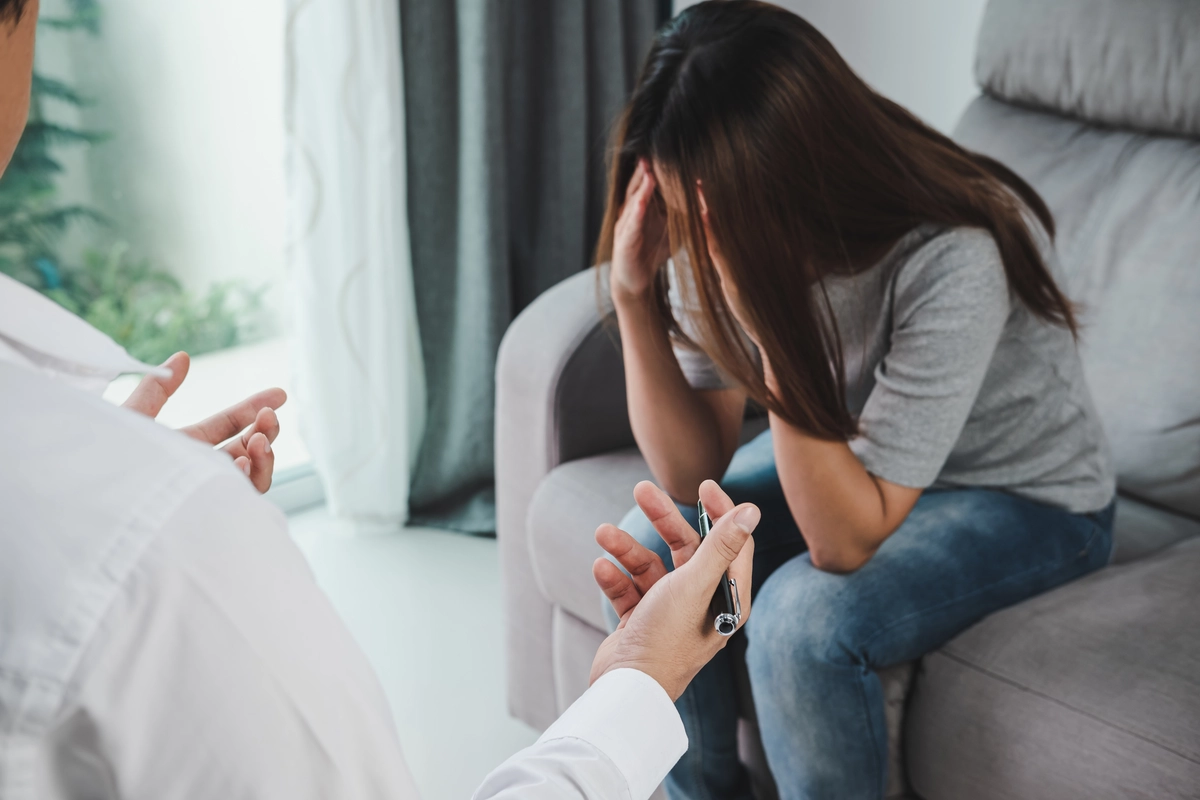
Poplar Bluff Medical Center – Outpatient
Poplar Bluff Medical Center – Outpatient is a private rehab located in Poplar Bluff, Missouri. Popla...

AA – Alcoholics Anonymous – Twelve and Twelve Group
AA – Alcoholics Anonymous – Twelve and Twelve Group is a non-profit rehab located in Kansas City, Mi...

AA – Alcoholics Anonymous – South Big Bend Boulevard
AA – Alcoholics Anonymous – South Big Bend Boulevard is a non-profit rehab located in Saint Louis, M...

Preferred Family Healthcare – Bridgeway Behavioral Health
Preferred Family Healthcare - Bridgeway Behavioral Health offers an outpatient program, day treatmen...

Behavioral Health Group
Behavioral Health Group is a private rehab located in Kansas City, Missouri. Behavioral Health Group...

Pathways Community Health
Pathways Community Health’s Camdenton, Missouri office is located at 741 N. Business Route 5 and pro...

FCC Behavioral Health
FCC Behavioral Health - Laura Drive provides intensive outpatient and outpatient adult substance abu...

Mahalo Counseling Center
Mahalo Counseling Center is a private rehab located in Saint Louis, Missouri. Mahalo Counseling Cent...

Turning Point Recovery Centers
Turning Point Recovery Centers strive to improve the quality of life in the individual and community...

AA – Alcoholics Anonymous
AA – Alcoholics Anonymous is a non-profit rehab located in Cape Girardeau, Missouri. AA – Alcoholics...

Imani House
Swope Health Services - Imani House is an outpatient rehab located in Kansas City, MO. Swope Health ...

Preferred Family Healthcare
Preferred Family Healthcare is a private rehab located in Chillicothe, Missouri. Preferred Family He...

Personal Solutions
Personal Solutions is a private rehab located in Cape Girardeau, Missouri. Personal Solutions specia...

Compass Health Network – SW Missouri Psychiatric Rehabilitation Center
The Compass Health Network (CHN) SW Missouri Psychiatric Rehabilitation Center provides substance ab...

Norcon Family Counseling
Norcon Family Counseling is a private rehab located in Liberty, Missouri. Norcon Family Counseling s...

AA – Alcoholics Anonymous – Arch street
AA – Alcoholics Anonymous – Arch street is a non-profit rehab located in Nevada, Missouri. AA – Alco...

AA – We Are One
We Are One Alcoholics Anonymous is a non-profit rehab located in Kansas City, MO. We Are One Alcohol...

AA – Alcoholics Anonymous
AA – Alcoholics Anonymous is a non-profit rehab located in Hazelwood, Missouri. AA – Alcoholics Anon...

FCC Behavioral Health – Stoddard County
FCC Behavioral Health - Stoddard County provides intensive outpatient and outpatient adult substance...
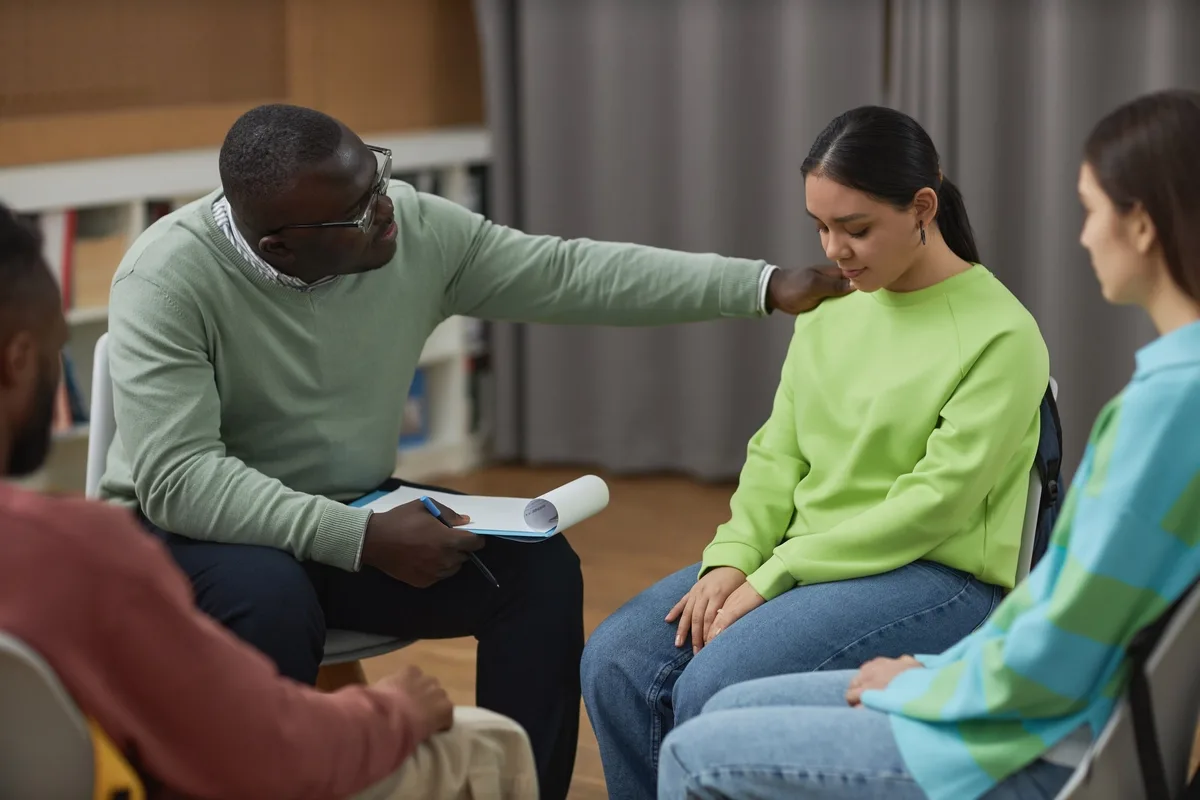
Prevention Consultants
Prevention Consultants is an outpatient rehab located in Rolla, MO. Prevention Consultants specializ...

EMASS
EMASS (Eastern Missouri Alternative Sentencing Services) is a privately owned company. EMASS provide...

Meramec Recovery Services
Meramec Recovery Services is a private rehab located in Union, Missouri. Meramec Recovery Services s...

Provident – Jefferson County
Provident – Jefferson County is a private rehab located in High Ridge, Missouri. Provident – Jeffers...

Preferred Family Healthcare
Preferred Family Healthcare provides assessment, outpatient, and intensive outpatient treatment to a...

Clark Community Mental Health Center – North Central Avenue
Clark Community Mental Health Center – North Central Avenue is a private rehab located in Monett, Mi...
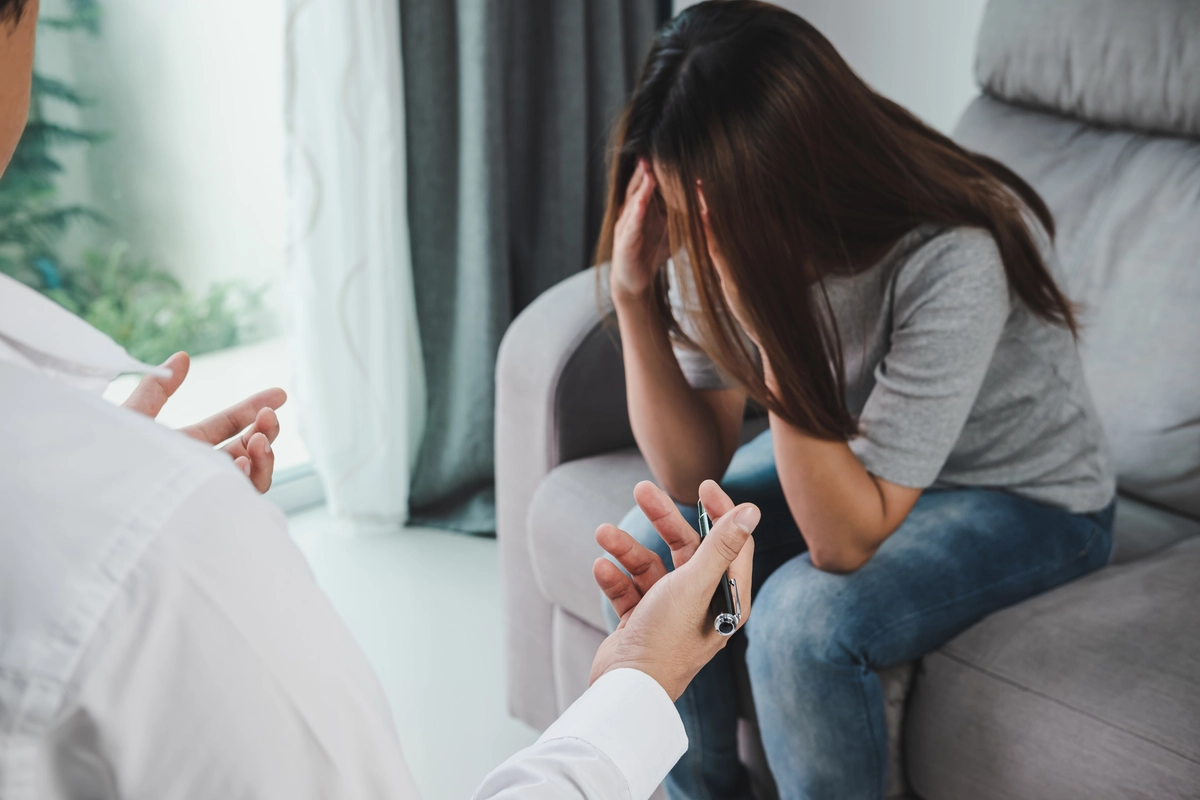
A Reality of Mind Counseling Services
A Reality of Mind Counseling Services is a private rehab located in Kansas City, Missouri. A Reality...

Preferred Family Healthcare
Preferred Family Healthcare offers a residential and outpatient program, day treatment, detox, and C...

Preferred Family Healthcare – Carol Jones Recovery Center
Preferred Family Healthcare- Carol Jones Recovery Center is a substance use disorder treatment cente...

Queen City Alano Club
Queen City Alano Club is a non-profit rehab located in Springfield, Missouri. Queen City Alano Club ...

Transitional Residential Facility
Transitional Residential Facility is a private rehab located in Jefferson City, Missouri. Transition...

FCC Behavioral Health – Ripley County
FCC Behavioral Health - Ripley County provides intensive outpatient and outpatient adult substance a...

Preferred Family Healthcare
Preferred Family Healthcare offers an outpatient program, day treatment, and ALEX. Preferred Family ...

Reality House Programs – Clinical Services
Reality House Programs – Clinical Services is a private rehab located in Columbia, Missouri. Reality...

Options Unlimited
Options Unlimited is a private rehab located in Fulton, Missouri. Options Unlimited specializes in t...

Burrell Behavioral Health – Marshall
Burrell Behavioral Health offers medication management for those adults struggling with mental healt...

Poplar Bluff Regional Medical Center – Behavioral Health
Poplar Bluff Regional Medical Center - Behavioral Health, located in Bluff, Missouri, offers alcohol...

AA – Alcoholics Anonymous – Unity Group
AA – Alcoholics Anonymous – Unity Group is a non-profit rehab located in Poplar Bluff, Missouri. AA ...

Rising Phoenix
Rising Phoenix is a private rehab located in Maryville, Missouri. Rising Phoenix specializes in the ...

AA – Alcoholics Anonymous
AA – Alcoholics Anonymous is a non-profit rehab located in Independence, Missouri. AA – Alcoholics A...

FCC Behavioral Health
FCC Behavioral Health - Courthouse Square provides intensive outpatient and outpatient adult substan...

ReDiscover – Columbus Street
ReDiscover, a nonprofit community mental health center, provides comprehensive programs and services...

Mending Hearts Recovery
Mending Hearts Recovery is a private rehab located in Cape Girardeau, Missouri. Mending Hearts Recov...

FCC Behavioral Health – Texas and Wright County
FCC Behavioral Health - Texas and Wright County provides intensive outpatient and outpatient adult s...

Tri County Mental Health Services
Tri County Mental Health Services is a non-profit rehab located in Kansas City, Missouri. Tri County...

31st Day
31st Day is a private rehab located in Columbia, MO. 31st Day offers a sober living home for drug an...
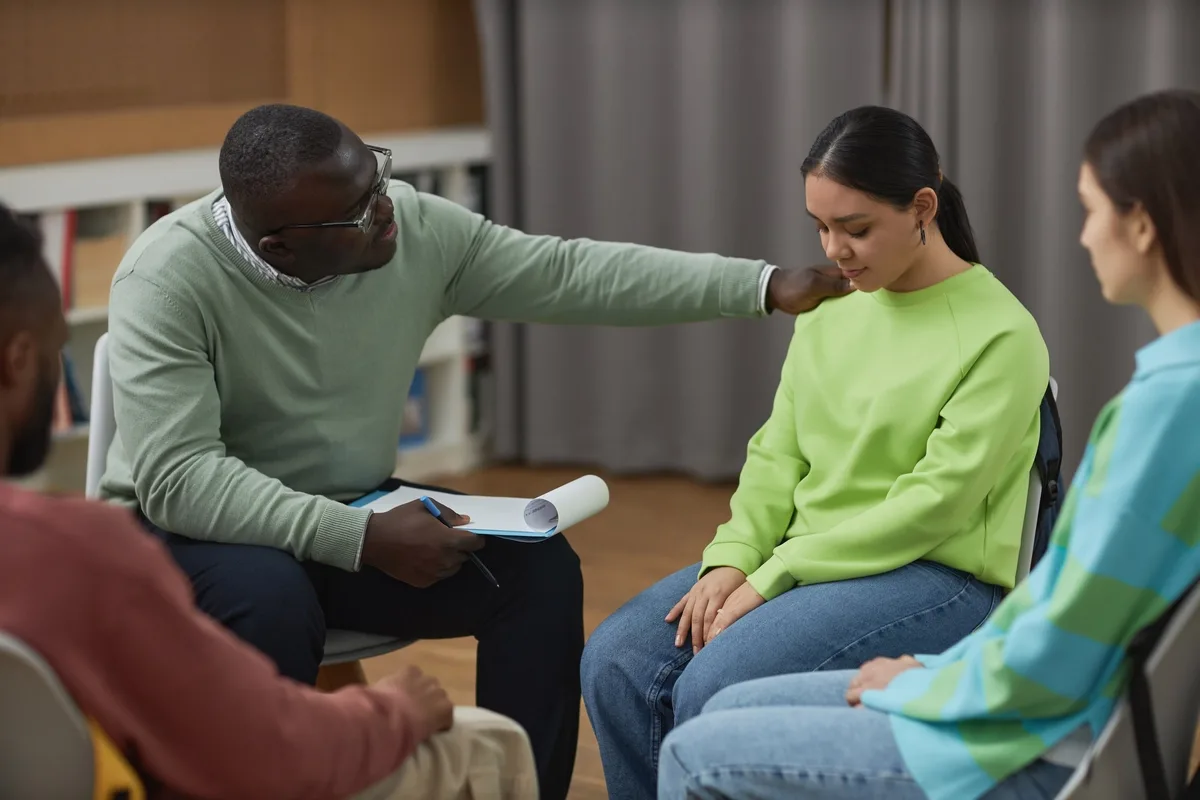
Oxford House – Lusher Road
Oxford House - Lusher Road is an inpatient rehab for men located in Saint Louis, MO. Oxford House - ...

Scott Greening Dependency Center
Scott Greening Dependency Center is a private rehab located in Kansas City, Missouri. Scott Greening...

AA – Alcoholics Anonymous – Camdenton
AA – Alcoholics Anonymous – Camdenton is a non-profit rehab located in Camdenton, Missouri. AA – Alc...

Pathways Community Health
Pathways Community Health - South Cherokee Drive provides mental health and substance use disorder t...

New Vision Counseling
New Vision Counseling is a private rehab located in Cape Girardeau, Missouri. New Vision Counseling ...

Clark Community Mental Health Center – 3rd Street
Clark Community Mental Health Center – 3rd Street is a non-profit rehab located in Monett, Missouri....

AA – Alcoholics Anonymous
AA – Alcoholics Anonymous is a non-profit rehab located in West Plains, Missouri. AA – Alcoholics An...

AA – Alcoholics Anonymous
AA – Alcoholics Anonymous is a non-profit rehab located in Imperial, Missouri. AA – Alcoholics Anony...

CenterPointe Outpatient Services
CenterPointe Outpatient Services is located in Washington, Missouri. CenterPointe Outpatient Service...

AA – Alcoholics Anonymous – We Are One Group
AA – Alcoholics Anonymous – We Are One Group is a non-profit rehab located in Kansas City, Missouri....

Comtrea – Alcohol and Substance Abuse Inpatient
Comtrea – Alcohol and Substance Abuse Inpatient is a private rehab located in Festus, Missouri. Comt...

Compass Health Network – Eldon
Pathways Behavioral Health - South Mill Street provides mental health and substance use disorder tre...

Turning Point Recovery Centers
Turning Point Recovery Centers strive to improve the quality of life in the individual and community...

Family Guidance Center – Maryville
Family Guidance Center – Maryville is a private rehab located in Maryville, Missouri. Family Guidanc...

Ozark Center – Neosho Clinic
Ozark Center – Neosho Clinic is a private rehab located in Neosho, Missouri. Ozark Center – Neosho C...

Black Alcohol – Drug Services
Black Alcohol – Drug Services is a private rehab located in Saint Louis, Missouri. Black Alcohol – D...

Community Services
Community Services is a private rehab located in Hillsboro, Missouri. Community Services specializes...

Mark Twain Behavioral Health
Mark Twain Behavioral Health is a private rehab located in Hannibal, Missouri. Mark Twain Behavioral...

North Central Missouri Mental Health Center
North Central Missouri Mental Health Center serves the nine counties of the Green Hills area. They p...

Family Counseling Center – Kennett
FCC Behavioral Health - 75 Highway is designed to comprehensively meet the wellness needs of serious...
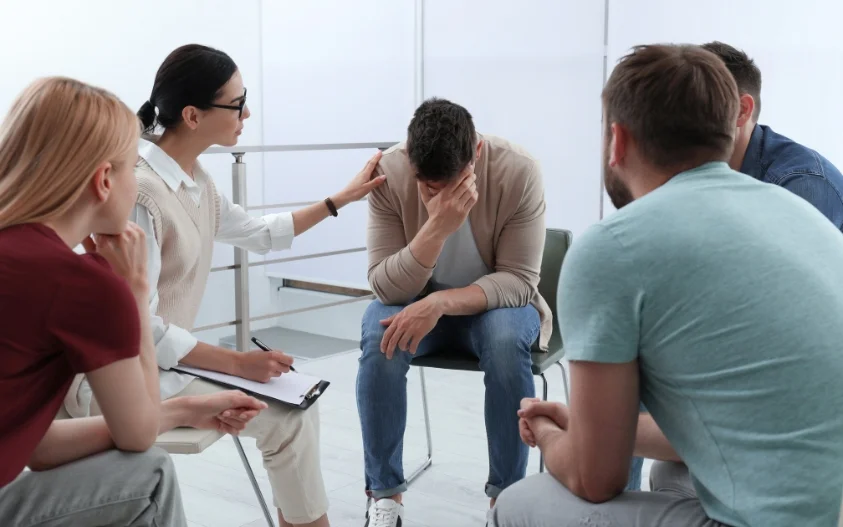
Family Conservancy – Independence
Family Conservancy – Independence is a private rehab located in Independence, Missouri. Family Conse...

North Central Missouri Mental Health Center
North Central Missouri Mental Health Center serves the nine counties of the Green Hills area. They p...
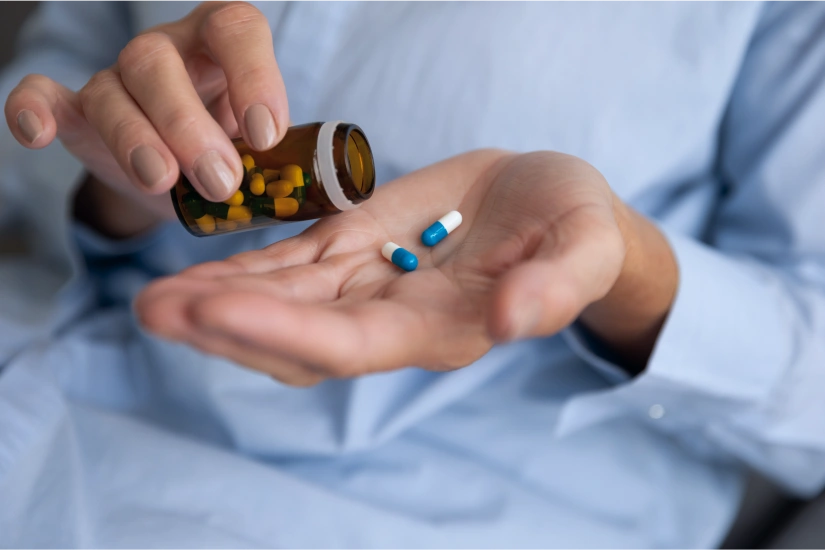
Childrens Home Society – Saint Louis
Childrens Home Society – Saint Louis is a non-profit rehab located in Saint Louis, Missouri. Childre...

Oxford House – Alhambra
Oxford House - Alhambra is a private rehab located in Columbia, MO. Oxford House - Alhambra speciali...

Center for Professional Counseling
Center for Professional Counseling is an outpatient rehab located in Springfield, MO. Center for Pro...

AA – Alcoholics Anonymous
AA – Alcoholics Anonymous is a non-profit rehab located in Belton, Missouri. AA – Alcoholics Anonymo...

AA – Alcoholics Anonymous – Swift Avenue
AA – Alcoholics Anonymous – Swift Avenue is a non-profit rehab located in Kansas City, Missouri. AA ...

Counseling Connections
Counseling Connections is a private rehab located in Festus, Missouri. Counseling Connections specia...

Northbound Treatment Services
Northbound Treatment Services is a drug and alcohol rehab located in Kirkwood, Missouri. They provid...

Salvation Army – Shield of Service
Salvation Army – Shield of Service is a non-profit rehab located in Kansas City, Missouri. Salvation...

Integrative Wellness Institute
Integrative Wellness Institute is a private rehab located in Kirksville, Missouri. Integrative Welln...

FCC Behavioral Health – Douglas County
FCC Behavioral Health - Douglas County provides intensive outpatient and outpatient adult substance ...

Preferred Family Healthcare
Preferred Family Healthcare is located in Kahoka, Missouri. Preferred Family Healthcare provides ass...

Preferred Family Healthcare
Preferred Family Healthcare is located in Brookfield, Missouri. Preferred Family Healthcare provides...

Southeast Missouri Behavioral Health
Southeast Missouri Behavioral Health is an outpatient facility that offers treatment for individuals...

Court Ordered Drug Classes
Court Ordered Drug Classes is a private rehab located in Independence, Missouri. Court Ordered Drug ...

Two Rivers Behavioral Health System
Two Rivers Behavioral Health System is a private rehab located in Kansas City, Missouri. Two Rivers ...

AA – Alcoholics Anonymous – P III
AA – Alcoholics Anonymous – P III is a non-profit rehab located in Kansas City, Missouri. AA – Alcoh...
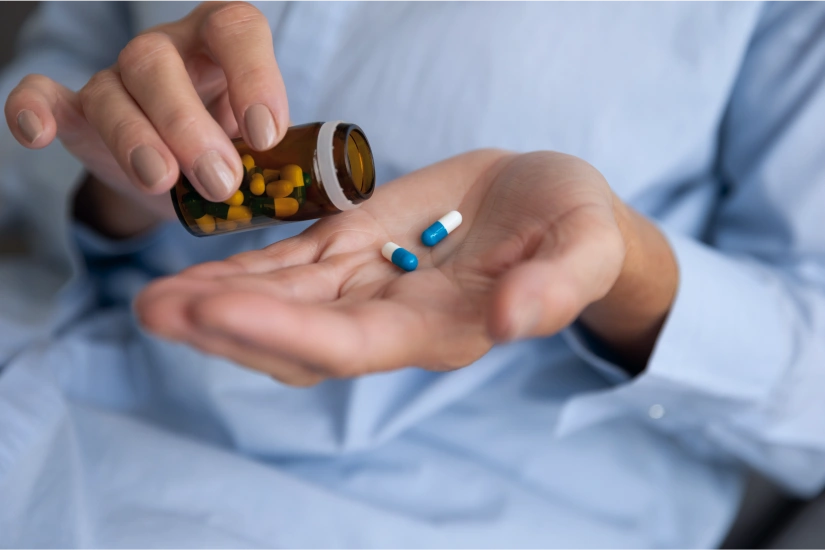
Trend – NCADA
Trend – NCADA is a private rehab located in Saint Louis, Missouri. Trend – NCADA specializes in the ...

Community Counseling Center
Community Counseling Center is a private, non-profit organization that serves individuals who are de...
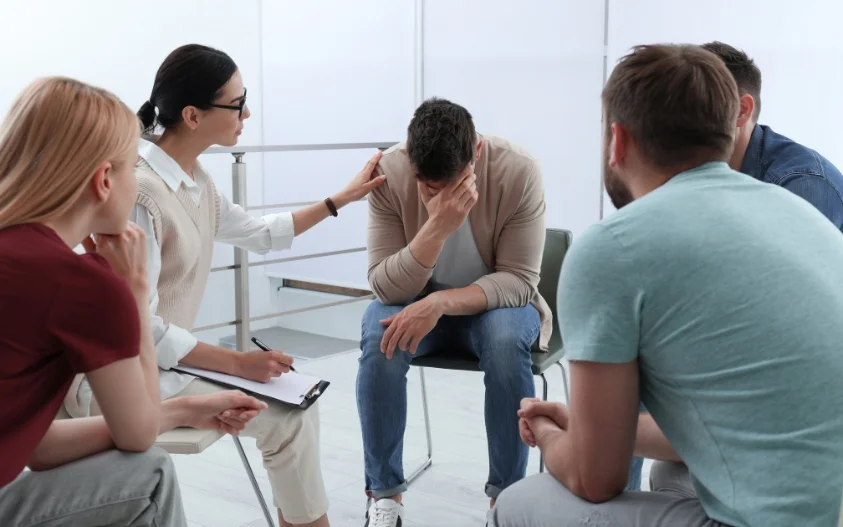
Al – Anon Family Groups Information Center
Al – Anon Family Groups Information Center is a non-profit rehab located in Independence, Missouri. ...

Pathways Community Health – West Truman Boulevard
Pathways Community Health - West Truman Boulevard provides mental health counseling and psychiatry s...

AA – Alcoholics Anonymous – South Lafayette Avenue
AA – Alcoholics Anonymous – South Lafayette Avenue is a non-profit rehab located in Sedalia, Missour...

Burrell Behavioral Health – Outpatient
Burrell Behavioral Health – Outpatient is a private rehab located in Marshfield, Missouri. Burrell B...

Burrell Behavioral Health – Carrollton
Burrell Behavioral Health - Carroltiton Clinic is a private rehab located in Carrollton, MO. Burrell...

Escape Alcohol and Drug Addiction Counseling
Escape Alcohol and Drug Addiction Counseling is an outpatient rehab located in Columbia, MO. Escape ...

Southeast Missouri Hospital – Psychiatric Unit
Southeast Missouri Hospital – Psychiatric Unit is a private rehab located in Cape Girardeau, Missour...

Behavioral Health Group
Behavioral Health Group is a private rehab located in Columbia, Missouri. Behavioral Health Group sp...

Community Mental Health Consultants
Community Mental Health Consultants is a comprehensive community mental health and substance abuse c...

Provident – South County
Provident – South County is a private rehab located in Saint Louis, Missouri. Provident – South Coun...

Preferred Family Healthcare – El Dorado Springs
Preferred Family Healthcare – El Dorado Springs is a private rehab located in El Dorado Springs, Mis...

Eating Disorder Center of Missouri
Eating Disorder Center of Missouri is a private rehab located in Fenton, Missouri. Eating Disorder C...
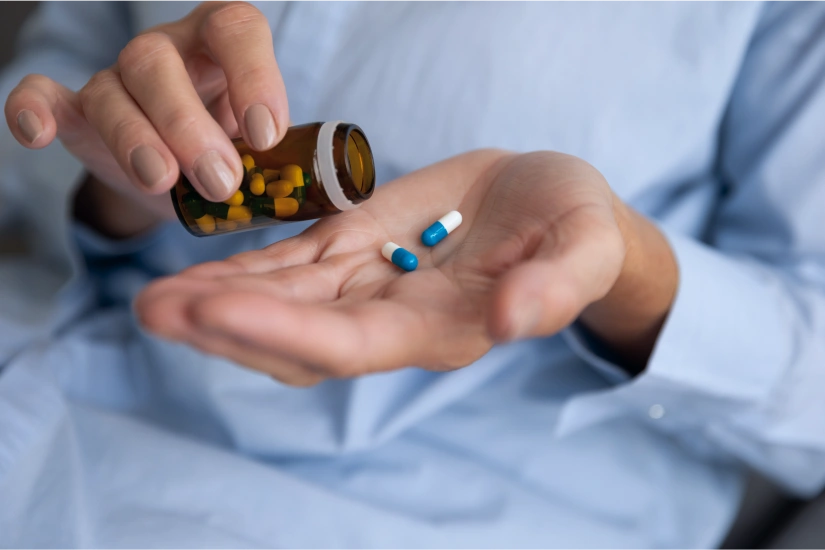
Fair Havens Recovery Center
Fair Havens Recovery Center is a private rehab located in Sikeston, Missouri. Fair Havens Recovery C...

Addiction Awareness
Addiction Awareness is a private rehab located in Saint Joseph, Missouri. Addiction Awareness specia...

Addiction Recovery Services
Addiction Recovery Services is a private rehab located in Independence, Missouri. Addiction Recovery...

Nara Outpatient
Nara Outpatient is a private rehab located in Kansas City, Missouri. Nara Outpatient specializes in ...

Mental Health Counseling Center
Mental Health Counseling Center is a private rehab located in Perryville, Missouri. Mental Health Co...

Gasconade County Counseling Services
Gasconade County Counseling Services is a private rehab located in Hermann, Missouri. Gasconade Coun...

Lafayette House
Lafayette House is a private traditional rehab located in Neosho, Missouri. Lafayette House speciali...

Mercy Clinic Behavioral Health
Mercy Clinic Behavioral Health is located in Lebanon, Missouri. Mercy Clinic Behavioral Health provi...

North Central Missouri Mental Health Center
North Central Missouri Mental Health Center serves the nine counties of the Green Hills area. They p...

Helping Hands Hope House
Helping Hands Hope House is a private rehab located in Joplin, Missouri. Helping Hands Hope House sp...

Community Alcohol and Drug Program
Community Alcohol and Drug Program is a private rehab located in Springfield, Missouri. Community Al...

The HOUSE – Cardinal Drive
The H.O.U.S.E is a non-for-profit traditional rehab located in Webb City, Missouri. The H.O.U.S.E sp...

Pathways Behavioral Health – Market Street
Pathways Behavioral Health - Market Street provides mental health services for children and adults. ...

Gibson Recovery Center
Gibson Recovery Center is a private rehab located in Farmington, Missouri. Gibson Recovery Center sp...

Burrell Behavioral Health – Columbia
Burrell Behavioral Health is a private, not for profit organization that provides a wide range of me...

Riverbend Behavioral Health
Riverbend Behavioral Health is a private rehab located in Columbia, Missouri. Riverbend Behavioral H...

Family Counseling Center – Ozark County
FCC Behavioral Health - Ozark County provides intensive outpatient and outpatient adult substance ab...
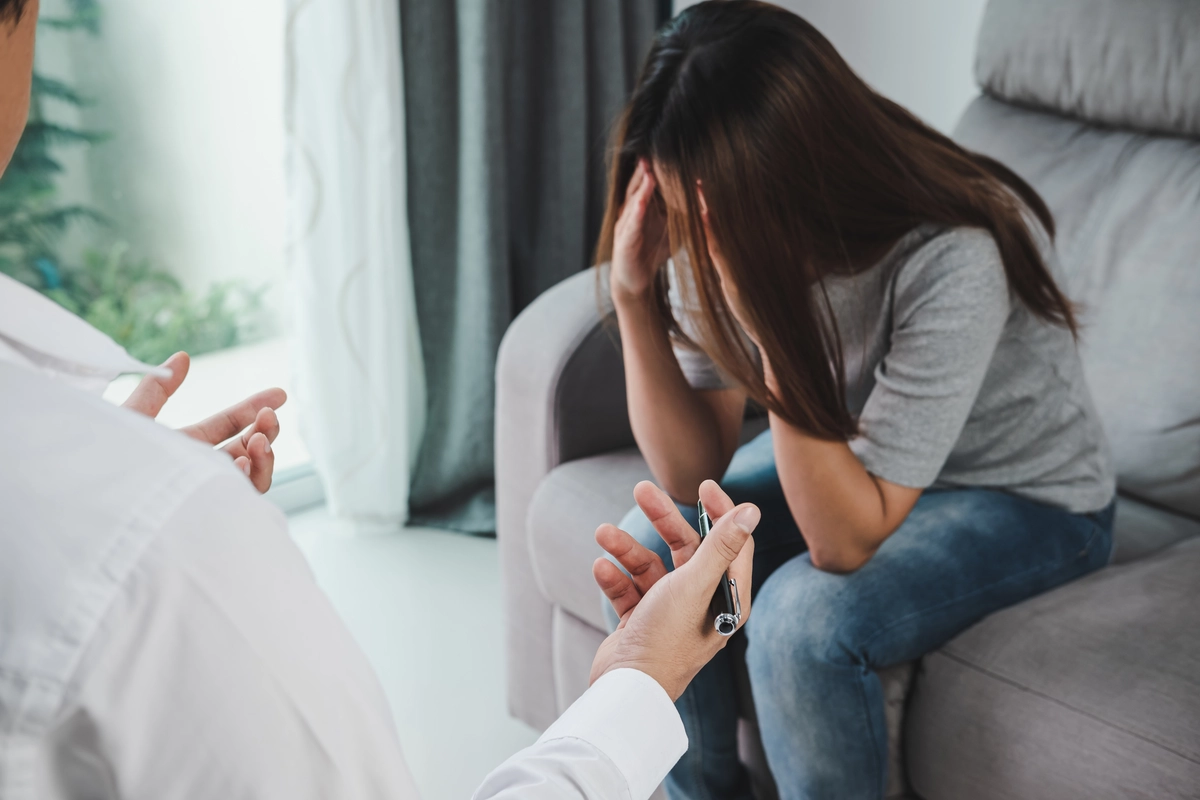
Fitzgibbon Hospital Behavioral Health
Fitzgibbon Hospital Behavioral Health is a private rehab located in Marshall, Missouri. Fitzgibbon H...

Southeast Missouri Behavioral Health
Southeast Missouri Behavioral Health is an outpatient facility that offers treatment for individuals...
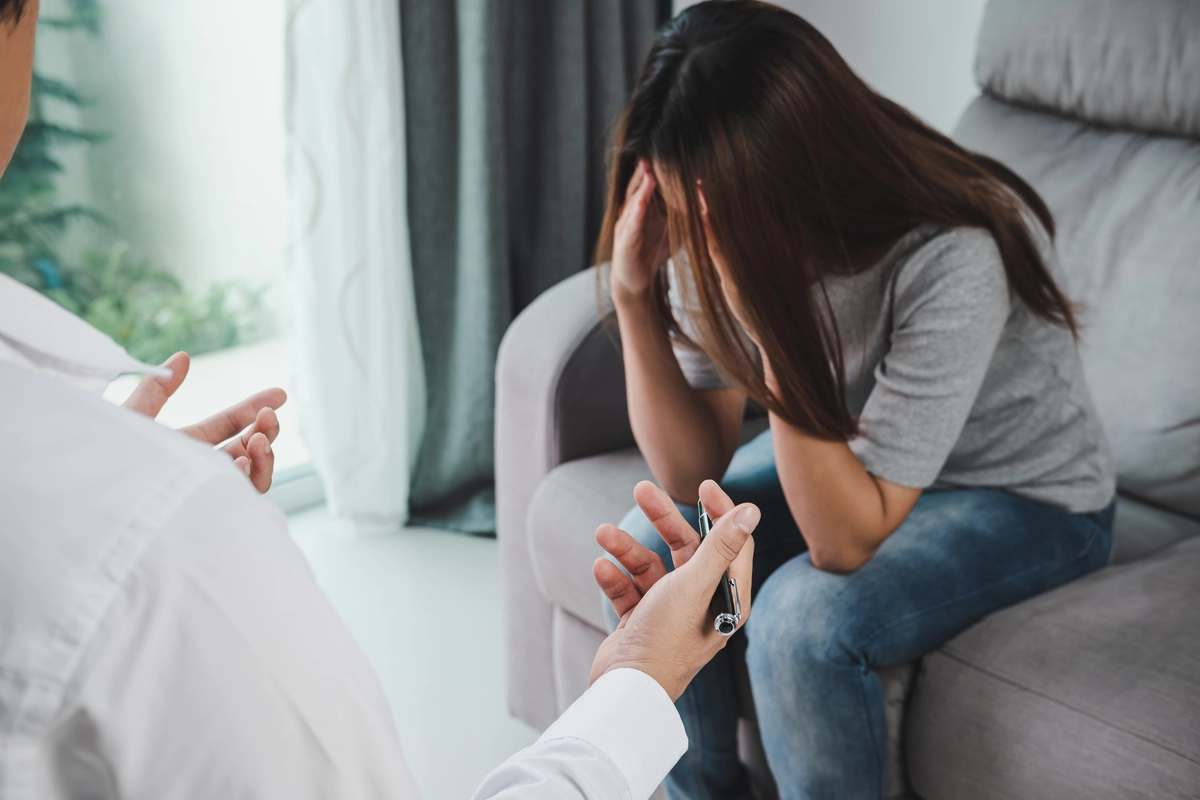
BJC Behavioral Health – Central Site
BJC Behavioral Health Central Site is an accredited behavioral health center that offers substance a...

Preferred Family Healthcare
Preferred Family Healthcare is a private rehab located in Saint Louis, Missouri. Preferred Family He...

New Beginnings
New Beginnings is a private rehab located in Saint Louis, Missouri. New Beginnings specializes in th...

Sober 1 House of Hope
Sober 1 House of Hope is a sober living facility that offers treatment for patients that are recover...

Burrell Behavioral Health – Outpatient
Burrell Behavioral Health – Outpatient is a private rehab located in Bolivar, Missouri. Burrell Beha...

New Beginning Counseling Center
New Beginning Counseling Center is a private rehab located in Maryville, Missouri. New Beginning Cou...

Kids Upward Bound
Kids Upward Bound is a private rehab located in Columbia, Missouri. Kids Upward Bound specializes in...

AA – Alcoholics Anonymous
AA – Alcoholics Anonymous is a non-profit rehab located in Marshall, Missouri. AA – Alcoholics Anony...

The HOUSE
The H.O.U.S.E is a non-profit facility offering transitional living for alcoholics and addicts with ...

Southeast Missouri Behavioral Health
Southeast Missouri Behavioral Health - Genevieve Avenue is a community based, nonmedical provider of...

Better Choices
Better Choices is a private rehab located in Macon, Missouri. Better Choices specializes in the trea...

AA – Alcoholics Anonymous – West Pettis Street
AA – Alcoholics Anonymous – West Pettis Street is a non-profit rehab located in Sedalia, Missouri. A...

Communicare
Communicare is a private rehab located in Webb City, Missouri. Communicare specializes in the treatm...

Truman Medical Centers – Community Treatment
Truman Medical Centers – Community Treatment is a private rehab located in Kansas City, Missouri. Tr...

AA – Alcoholics Anonymous – Riverpark Group
AA – Alcoholics Anonymous – Riverpark Group is a non-profit rehab located in Kansas City, Missouri. ...

AA – Alcoholics Anonymous
AA – Alcoholics Anonymous is a non-profit rehab located in Kirksville, Missouri. AA – Alcoholics Ano...

Alliance Counseling Associates
Alliance Counseling Associates is a private counseling clinic located in Branson, Missouri. Alliance...

Alano Society of Alcoholics Anonymous
Alano Society of Alcoholics Anonymous is a non-profit rehab located in Kansas City, Missouri. Alano ...

Positive Choices
Positive Choices is a private rehab located in Saint Louis, Missouri. Positive Choices specializes i...

Serenity Services
Serenity Services is a private rehab located in Saint Louis, Missouri. Serenity Services specializes...

NA – Narcotics Anonymous – St. Peters
NA – Narcotics Anonymous – St. Peters is a private rehab located in Saint Peters, Missouri. NA – Nar...

Signature Behavioral Healthcare – Comprehensive Psychiatric Associates
Signature Behavioral Healthcare - Comprehensive Psychiatric Associates is located in Kansas City, Mi...

Central State MHC
Central State MHC provides substance abuse treatment in an outpatient setting for people in Jackson,...

Southeast Missouri Behavioral Health – Vine St
Southeast Missouri Behavioral Health - Vine St is an outpatient facility that offers treatment for i...

Teen Challenge of the Four States
Teen Challenge of the Four States is a private rehab located in Neosho, Missouri. Teen Challenge of ...

Central State MHC
Central State MHC provides substance abuse treatment in an outpatient setting for people in Jackson,...

ReDiscover – Coed Residential
ReDiscover – Coed Residential is a private rehab located in Lees Summit, Missouri. ReDiscover – Coed...

Synergy Counseling Center
Synergy Counseling Center is located in Springfield, Missouri. Synergy Counseling Center offers Inte...

Central State MHC
Central State MHC provides substance abuse treatment in an outpatient setting for people in Jackson,...

Assessment & Counseling Solutions
Assessment & Counseling Solutions offers outpatient treatment for individuals with alcohol and/or su...

Arthur Center Behavioral Health
Arthur Center Behavioral Health is a private rehab located in Fulton, Missouri. Arthur Center Behavi...

Alliance Counseling Associates
Alliance Counseling Associates is a private counseling clinic located in Cassville, Missouri. Allian...

Mercy Clinic Behavioral Health
Mercy Clinic Behavioral Health is located in Joplin, Missouri. Mercy Clinic Behavioral Health provid...

Southeast Missouri Behavioral Health – Ste Genevieve Ave
Southeast Missouri Behavioral Health - Ste Genevieve Ave is a residential facility that offers treat...

Shelterwood – Rebalance
Shelterwood – Rebalance is a private rehab located in Independence, Missouri. Shelterwood – Rebalanc...

North Central Missouri Mental Health Center
North Central Missouri Mental Health Center serves the nine counties of the Green Hills area. They p...

AA – Alcoholics Anonymous
AA – Alcoholics Anonymous is a private rehab located in Saint Louis, Missouri. AA – Alcoholics Anony...

Life Changers Outreach – Missouri Center
Life Changers Outreach is a 12-month discipleship program for men and women struggling with various ...

Step By Step Counseling
Step By Step Counseling is a private rehab located in Saint Charles, Missouri. Step By Step Counseli...

CenterPointe Outpatient Services – West County
CenterPointe Outpatient Services - West County is located in Saint Louis, Missouri. CenterPointe Out...

Southeast Missouri Behavioral Health
Southeast Missouri Behavioral Health is an outpatient facility that offers treatment for individuals...

Signature Behavioral Healthcare
Signature Psychiatric Hospital is located in North Kansas City, Missouri. Signature Psychiatric Hosp...

Southeast Missouri Behavioral Health
Southeast Missouri Behavioral Health is an outpatient facility that offers treatment for individuals...

Mission Gate Ministry After Care Program
Mission Gate is both an in prison ministry and a residential addiction treatment program for men and...

Al Anon
Al Anon is a private rehab located in Saint Louis, Missouri. Al Anon specializes in the treatment of...

Millennium IOP
Millennium IOP is a private rehab located in Saint Louis, Missouri. Millennium IOP specializes in th...

Alliance Counseling Associates
Alliance Counseling Associates is a private counseling clinic located in Reeds Spring, Missouri. All...

Family Counseling Center
Family Counseling Center is a private rehab located in Fayette, Missouri. Family Counseling Center s...

Community Counseling Center – Ridgeway House
Community Counseling Center - Ridgeway Center offers a intensive residential program for those indiv...

Central State MHC
Central State MHC provides substance abuse treatment in an outpatient setting for people in Jackson,...

Alliance Counseling Associates
Alliance Counseling Associates is a private counseling clinic located in Aurora, Missouri. Alliance ...

Bridgeway Behavioral Health
Bridgeway Behavioral Health is a private rehab located in Town And Country, Missouri. Bridgeway Beha...

CenterPointe Outpatient Services
CenterPointe Outpatient Services is located in Columbia, Missouri. CenterPointe Outpatient Services ...

SouthEast Behavioral Healthcare Socialization
SouthEast Behavioral Healthcare Socialization is a private rehab located in Hollister, Missouri. Sou...
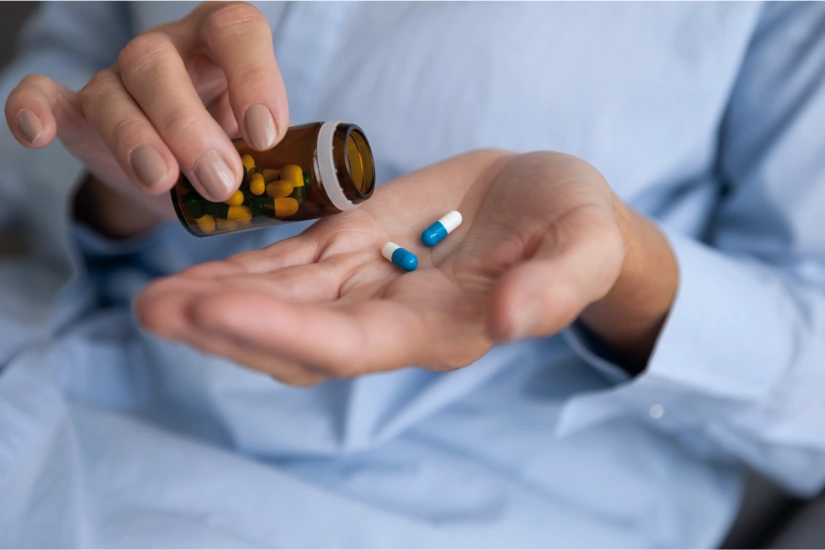
Restart Recovery
Restart Recovery offers treatment for opioid addiction by providing Medication Assisted Treatment us...

SATOP
SATOP is a private rehab located in Saint Louis, Missouri. SATOP specializes in the treatment of Sub...

The Place
The Place is a private rehab located in Saint Louis, Missouri. The Place specializes in the treatmen...

Heartland Center for Behavioral Change
Heartland Center for Behavioral Change in Bolivar, MO provides CSTAR Outpatient Substance Use Treatm...

Heartland Center for Behavioral Change
Heartland Center for Behavioral Change is a private, not for profit, charitable organization dedicat...
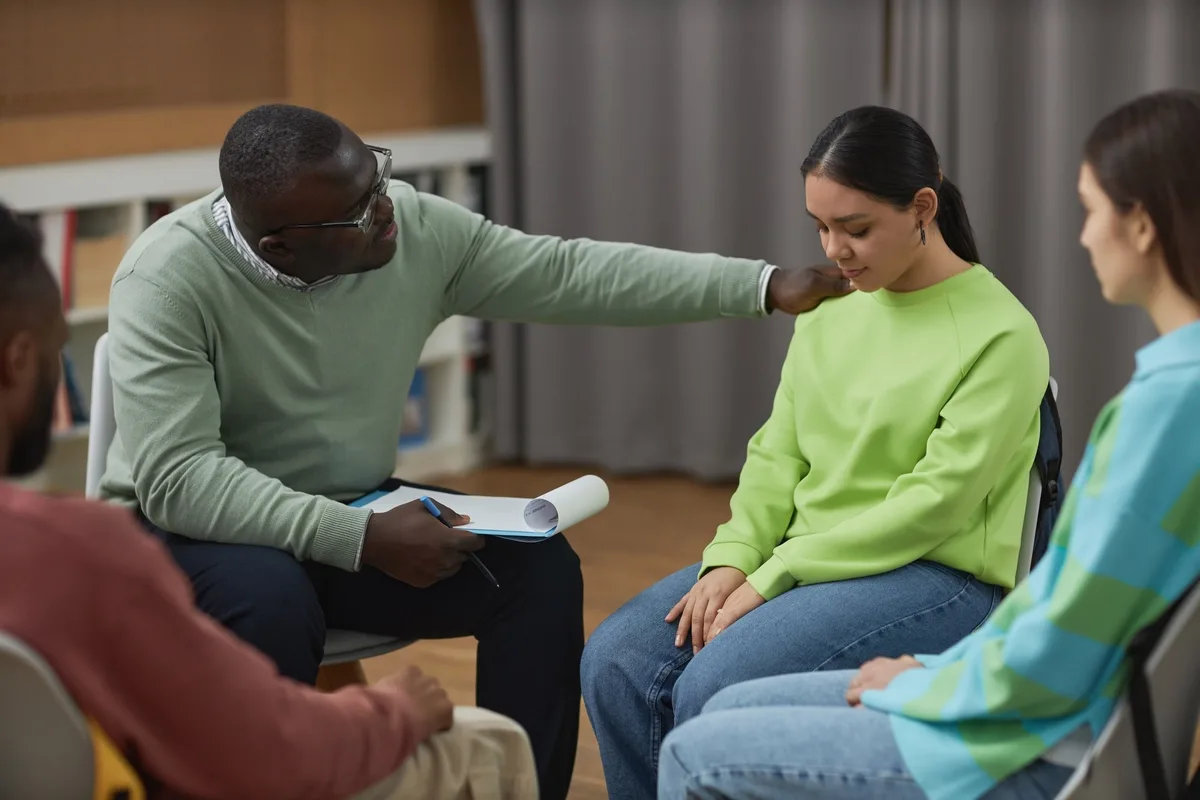
Accredited SATOP – ADEP
Accredited SATOP – ADEP is a private rehab located in Columbia, Missouri. Accredited SATOP – ADEP sp...

El Puente
El Puente is a private rehab located in Jefferson City, Missouri. El Puente specializes in the treat...

Preferred Family Healthcare – ALEX
Preferred Family Healthcare - ALEX is located in Desloge, Missouri. Preferred Family Healthcare - AL...

Preferred Family Healthcare
Preferred Family Healthcare offers an outpatient program, day treatment, and TOC. Preferred Family H...

Heartland Center for Behavioral Change – Reeds Spring Outpatient Clinic
Heartland Center for Behavioral Change located in Reeds Spring, MO serves adult men and women of the...

Preferred Family Healthcare – Bridgeway Behavioral Health – The Farm
Preferred Family Healthcare - Bridgeway Behavioral Health - The Farm is located in Winfield, Missour...

Bootheel Counseling Services
Bootheel Counseling Services offers outpatient counseling services for individuals or families strug...

Fellowship Recovery Club
Fellowship Recovery Club is a non-profit rehab located in Springfield, Missouri. Fellowship Recovery...

North Central Missouri Mental Health Center
North Central Missouri Mental Health Center serves the nine counties of the Green Hills area. They p...

Ozark Center – Inspire Center
Ozark Center - Inspire Center is Ozark Center’s INSPIRE Center, a psychosocial rehabilitation progra...

Heartland Center for Behavioral Change
Heartland Center for Behavioral Change in Branson, MO serves adult men and women of the City of Bran...

AA – Alcoholics Anonymous – Information Center
AA – Alcoholics Anonymous – Information Center is a non-profit rehab located in Kansas City, Missour...

AA – Alcoholics Anonymous – Independence No 1
AA – Alcoholics Anonymous – Independence No 1 is a non-profit rehab located in Independence, Missour...
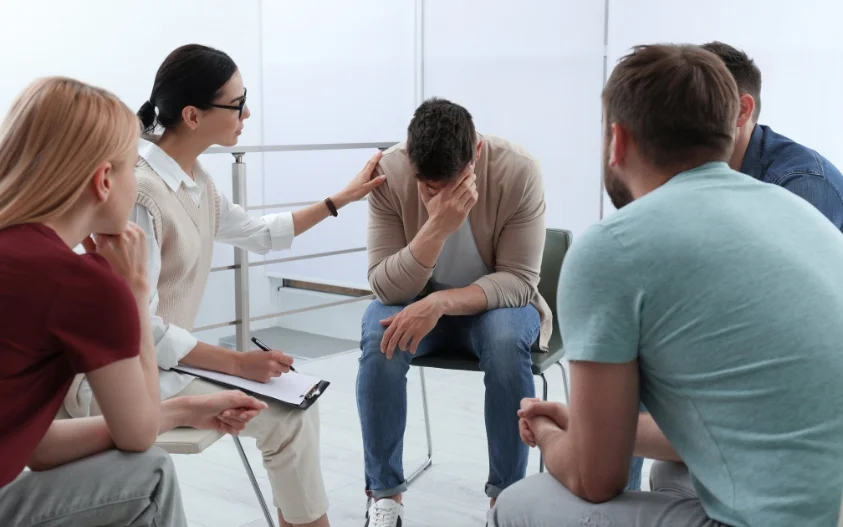
Preferred Family Healthcare – Champion Center
Preferred Family Healthcare - Champion Center is located in Springfield, Missouri. Preferred Family ...

AA – Alcoholics Anonymous
AA – Alcoholics Anonymous is a non-profit rehab located in Pacific, Missouri. AA – Alcoholics Anonym...

EMASS
EMASS (Eastern Missouri Alternative Sentencing Services) is a privately owned company. EMASS provide...

Heartland Center for Behavioral Change – Casville Outpatient Clinic
Heartland Center for Behavioral Change–Cassville Outpatient Clinic, in Cassville, Missouri, provides...

Preferred Family Healthcare – YCPRC
Preferred Family Healthcare - YCPRC offers outpatient treatment for mental health issues. Preferred ...

FCC Behavioral Health – Cooper Commons Intensive Residential
The FCC Behavioral Health’s Cooper Commons Intensive Residential facility is a co-occurring mental h...

ReDiscover – Friendship House
ReDiscover - Friendship House serves women and women with children during the first 30 days of recov...

Heartland Center for Behavioral Change
Heartland Center for Behavioral Change is a private, not for profit, charitable organization dedicat...
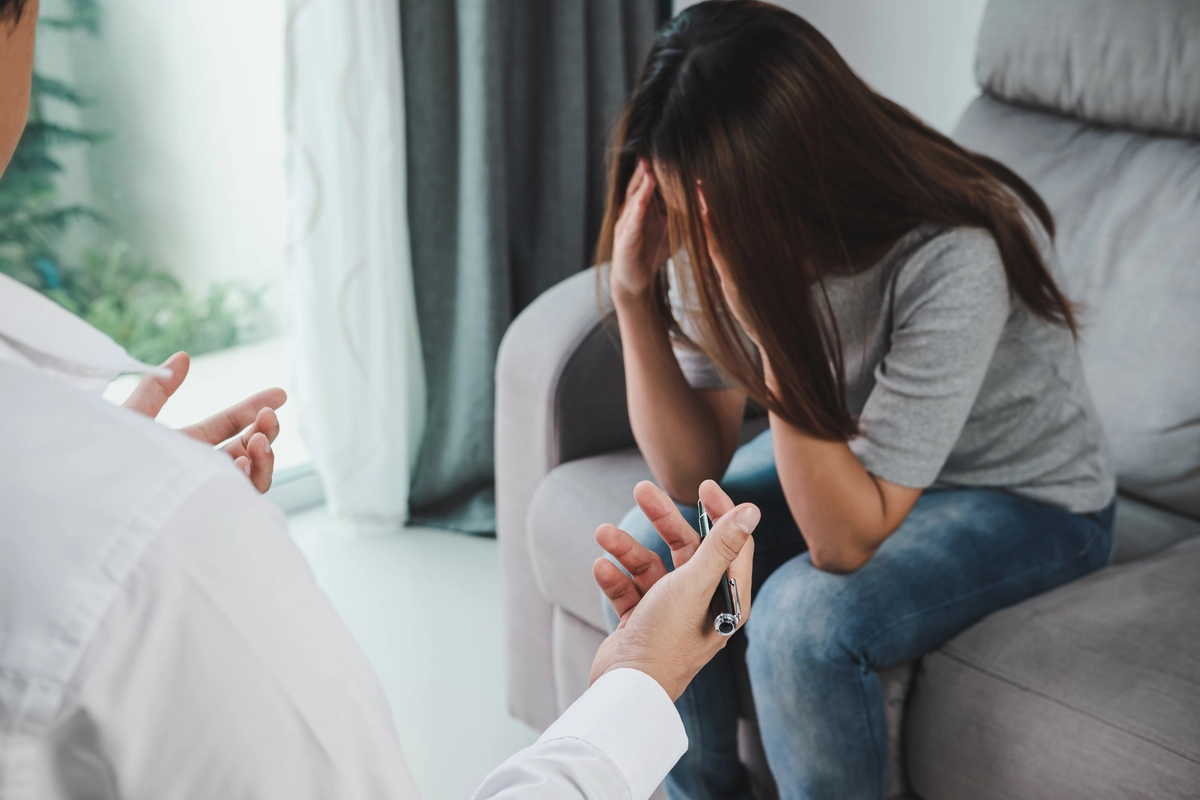
Preferred Family Healthcare – SPIRIT
Preferred Family Healthcare - SPIRIT is located in Edina, Missouri. Preferred Family Healthcare - SP...

Assessment & Counseling Solutions
Assessment & Counseling Solutions offers outpatient treatment for individuals with alcohol and/or su...

Assessment and Counseling Solutions – Main Street
Assessment and Counseling Solutions - Main Street offers outpatient treatment for individuals with a...

Bridgeway Behavioral Health
Bridgeway Behavioral Health is a private rehab located in Montgomery City, Missouri. Bridgeway Behav...
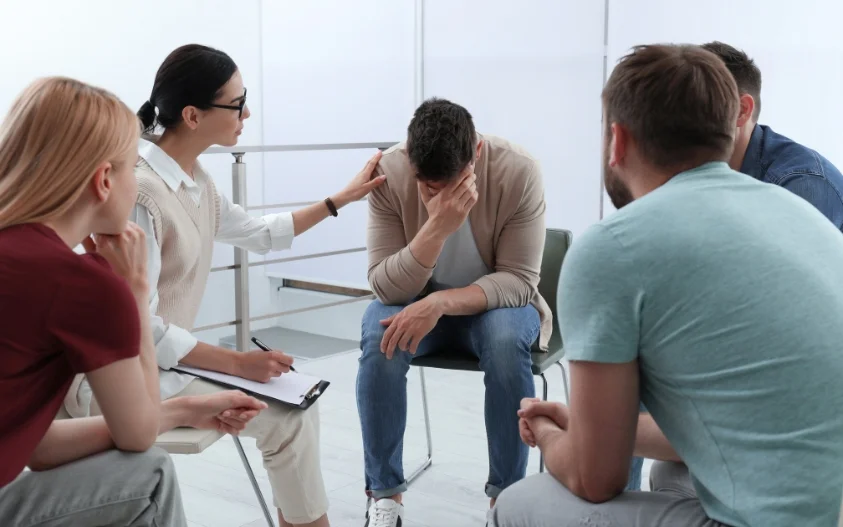
AA – Alcoholics Anonymous – Olive Street
AA – Alcoholics Anonymous – Olive Street is a non-profit rehab located in Kansas City, Missouri. AA ...

ReDiscover – COED Residential
ReDiscover - COED Residential provides residential housing for men and women (age 18 and over) in re...

Southeast Missouri Behavioral Health
Southeast Missouri Behavioral Health is an outpatient facility that offers treatment for individuals...





















































































